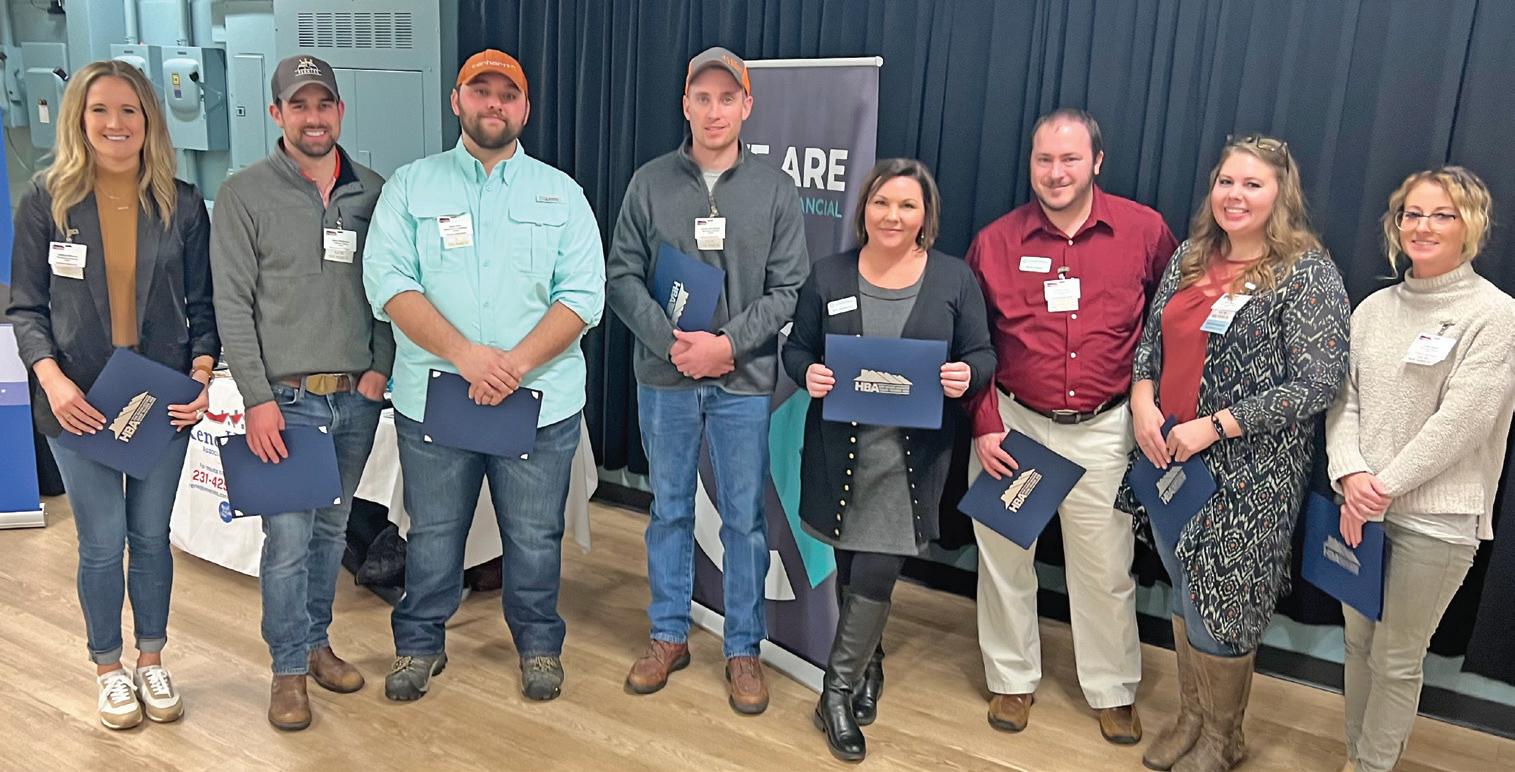















Fee-Only Unbiased Investment Advice
• We uphold a Fiduciary Standard and work with clients on a fee-only basis.
• We do not receive commissions, kick-backs, or soft dollars from product sales, eliminating inherent conflicts of interest.
• Our team of professionals holds designations and degrees such as CFP®, CFA, CPA, MBA, and PhD.

• Charles received his MBA from the Kellogg School of Management - Northwestern University, his MA in Economics from Western Michigan University, and Executive Education from Harvard Business School and Columbia University.
• Ranked #1 on Barron’s list of America’s TOP Independent Advisors and is the highest ranked NAPFA-Registered Fee-Only Advisor on the list.*
• Ranked #6 in the nation on Forbes’ list of TOP Wealth Advisors and is the ONLY Independent Advisor in the top 10.**
Minimum investment: $1,000,000 in Michigan/$2,000,000 outside of Michigan. Assets under custody of LPL Financial, TD Ameritrade, and Charles Schwab.
*As reported in Barron’s March 12, 2022 and September 17, 2021. Based on assets under management, revenue produced for the firm, regulatory record, quality of practices, and other factors. For fee-only status see NAPFA.org.
**As reported in Forbes April 7, 2022 and August 24, 2022. The Forbes rankings, developed by SHOOK Research, are based on an algorithm of qualitative criteria, mostly gained through telephone and in-person due diligence interviews, and quantitative data. Those advisors that are considered have a minimum of seven years experience, and the algorithm weighs factors like revenue trends, assets under management, compliance records, industry experience and those that encompass best practices in their practices and approach to working with clients. See zhangfinancial.com/disclosure for full ranking criteria.

Telecommunications provider Ascomnorth in Acme recently merged with Shoreline Power Services in Williamsburg, becoming a division of Shoreline Power. All team members have transitioned to Shoreline Power, with former Ascomnorth owners Dave Barth now semi-retired and Dave Wierenga serving in the role of engineer and operations manager of Ascomnorth. The merger is resulting in expanded service offerings of communications, security, data and other systems across a broader geographic area.
Traverse City. The new office is located at 847 S. Garfield Ave.

Roofing contractor Springfield in Kingsley recently earned the Platinum Contractor Award from Duro-Last for 2022, the highest quality distinction given to its contractors. This achievement places Springfield in the top 3% of Duro-Last’s contractors, consistently installing the highest quality roofing systems.

The Traverse Bay Children’s Advocacy Center, in partnership with Honor Bank and Wild Juniper Nursery, has launched a campaign encouraging individuals to protect children from sexual abuse. Seeds for Protection inspires local residents to show their sustaining promise to protect children in the community by donating a set amount each month. Honor Bank will match the first $5,000 in donations. As a thank you for their ongoing pledge to local children, the first 800 community members to sign up will receive a seed packet of locally cultivated seeds donated by Wild Juniper Nursery. Local businesses interested in supporting the campaign can learn more at traversebaycac.org.
Trevor Kay, D.D.S., recently purchased the office of Debra Lewis, D.D.S., in Interlochen and has renamed it Northern Shores Dental Group. The practice offers general, restorative and cosmetic dentistry for the whole family and is accepting new patients.



Grand Rapids-based Mercantile Bank is expanding its presence in the northwest Michigan market with the addition of Scot Zimmerman as community bank president. Zimmerman brings more than 20 years of banking experience to his new role. He joins the bank’s current Vice President and Commercial Lender, Aaron Davenport, and Emily Kelly, mortgage lender, on the growing team. The bank has secured a physical location in downtown Traverse City, adding to its existing locations in Petoskey and Cadillac.

Real estate professionals Crystal Gober and Tom Cronin have joined forces with their 20-plus years of real estate experience and opened Traverse City Real Estate in
Fifty-four employers across the 10-county northwest region will receive $1.7 million in 2023 for employee training as part of Michigan’s Going PRO Talent Fund. Employers will be able to train 1,020 new and existing employees. Award recipients span a range of industries, and include Cultured Ferments Company, Graceland Fruit, Great Lakes Stainless,




Iron Fish Distillery , Skilled Manufacturing and Venturi . Businesses applied for the grants with assistance from the Northwest Michigan Works! business services team.
Aerie Restaurant & Lounge at the Grand Traverse Resort & Spa in Acme recently received a Wine Spectator award of excellence. The annual program recognizes restaurants around the world as a top destination for wine lovers. “It is an honor to receive the Wine Spectator Award of Excellence for the sixth year in a row,” said Maria Lopez, Aerie manager. “We put great effort into building a wine list that pairs with our extraordinary food offerings.”

ACQUIRES CLARK MANUFACTURING

Century , a Traverse City metal manufacturing and thermal processing company that specializes in aerospace and industrial tooling products, has acquired Clark Manufacturing , a metal machining company specializing in oil and gas, fluid and compression, and medical components. The merger agreement was reached last month.
“The acquisition of Clark is in line with our long-term vision for Century and brings a new set of customers, portfolio of products, and significantly expanded milling capability to our current product offerings,” said Tim Healy, president of Century and chief executive of the newly combined companies.
Brian Walter, president of Clark, will continue in that role and assumes partial ownership of the combined companies.
A new Small Business Growth Fund to help ensure small business success across the 10-county region has been created by Venture North Funding and Development. The fund will be used for minigrants and business consulting.
“Many small businesses are confronted with legal, accounting, marketing, product development or other questions that get in the way of progress,” said Venture North President Laura Galbraith. “We want to learn about the things that are holding a business back and address them through a combination of small grants, business consulting or both in addition to our affordable lending program that is supported through a different fund.”
Galbraith said Venture North hopes to secure grants and charitable donations from agencies and philanthropic organizations to build the fund to $500,000 and replenish it, as it is used to help small businesses. Organizations, agencies or individuals interested in providing a contribution may do so by contacting Venture North.
WellNow Urgent Care , one of the country’s fastest-growing urgent care providers, opens this month at 3570 North U.S. 31 South in Traverse City. The facility offers treatment for non-life-threatening injuries and illnesses, COVID-19 testing and treatment, and occupational medicine services. It’s open daily, 8am-8pm.
The Michigan Wine Collaborative – voice of the Michigan wine industry –recently announced the release of The DREAM wine, which will provide seed money for its inclusion and expansion education fund. This fund will provide education and training to two underrepresented candidates for future career opportunities in Michigan’s growing wine industry. The statewide collaborative plans to release a new wine annually to help fund candidates that apply to the program. Brian Lillie, director of hospitality and distribution at Chateau Chantal, and Lee Lutes, head winemaker at Black Star Farms, sit on the collaborative’s executive team.

The 2023 Home EXPO sponsored by the Home Builders Association of the Grand Traverse Area is March 11-12 at the Grand Traverse Resort & Spa in Acme. This year’s EXPO features exhibits by more than 90 building contractors, remodelers, landscapers, financiers and other businesses related to the region’s construction and remodeling industry. Advance tickets are available at the HBA office in Traverse City or mynorthtickets.com.

As an all-women collective giving organization, Impact100 Traverse City has awarded 13 transformational grants of $100,000+ each to nonprofits serving Northern Michigan.
As an all-volunteer collectivegiving organization, Impact100 Traverse City has awarded 13 transformational grants of $100,000+ eachtononprofits ser ving Nor thern Michigan.
As an all-women collective giving organization, Impact100 Traverse City has awarded 13 transformational grants of $100,000+ each to nonprofits serving Northern Michigan.
As an all-women collective giving organization, Impact100 Traverse City has awarded 16 transformational grants of $100,000+ each to nonprofits serving Northern Michigan.



As an all-women collective giving organization, Impact100 Traverse City has awarded 13 transformational grants of $100,000+ each to nonprofits serving Northern Michigan.
We’re making a big impact and invite you to join us by making your contribution today! 501(c)(3)
As an all-volunteer collectivegiving organization, Impact100 Traverse City has awarded 13 transformational grants of $100,000+ eachtononprofits ser ving Nor thern Michigan.


As an all-volunteer collectivegiving organization, Impact100 Traverse City has awarded 13 transformational grants of $100,000+ eachtononprofits ser ving Nor thern Michigan. We’remaking abig impact and inviteyou to join us for2022 membership today! 501(c)(3)
We’re making a big impact and invite you to join us by making your contribution today! 501(c)(3)
We’remaking abig impact and inviteyou to join us for2022 membership today! 501(c)(3)
Help provide four grants this year. Join us today!

Donations are 100% tax deductible.
Learnmoreatwww.impacttc.org
We’remaking abig impact and inviteyou to join us for2022 membership today! 501(c)(3)
We’re making a big impact and invite you to join us by making your contribution today! 501(c)(3)
Learn more at www.impacttc.org, (231) 499-5672
Learnmoreatwww.impacttc.org
Learnmoreatwww.impacttc.org
MEMBERSHIP DEADLINE: APRIL 1




On any given day, I may be seen wearing a number of different hats: venture firm CFO, angel investment group executive director, small business owner, or nonprofit board member.
In each role, the function of understanding the financial position of an organization is very much the same. No matter what a nonprofit or business mission said, the real story on how well a strategy is performing is revealed by its financial statement.
Indeed, it can be hard for an organization to balance its mission against its need for margins and what the market is ultimately saying it wants.
Layered on top of today’s economic uncertainty and continued inflation, the business landscape is rapidly evolving. With increasing awareness around social and environmental issues, consumers and employees are demanding that for-profit companies demonstrate a greater impact beyond the bottom line.
This has led to the emergence of new acronyms and programs such as DEI (diversity, equity, and inclusion) and ESG (environmental, social, and governance), as well as the rise of PBLLCs (public benefit limited liability companies) and B Corp certifications.
With for-profit companies needing to demonstrate more social awareness, so too must nonprofits demonstrate greater financial acumen. One of my favorite sayings is that nonprofit is a tax status, not a business model.
Indeed, nonprofits are not exempt from the need to generate and diversify revenue and control costs to maintain
EDITORIAL & BUSINESS OFFICE
P.O. Box 4020 Traverse City, MI 49685 231-947-8787
ON THE WEB tcbusinessnews.com
PUBLISHER
Luke W. Haase lhaase@tcbusinessnews.com
CONTRIBUTING EDITOR
Gayle Neu gneu@tcbusinessnews.com
HEAD WRITER
Craig Manning
CREATIVE DIRECTOR
Kyra Cross Poehlman
financial stability. Donors agree! In a 2022 survey, 59% of respondents ranked trust that the nonprofit would use the donation wisely as the most important factor when donating.
For both nonprofits and for-profit businesses, no matter how noble the pursuit or program, no organization can exist for long without minding the bottom line. Profit margins are the main indicator of how effective an organization will be in converting market demand into long-term stakeholder value.
time? What are the average monthly expenses? How many months of operating expenses could be funded with cash on hand? Are assets that can be easily liquidated sufficient to payoff outstanding debts as they become due? At the end of the month, does income exceed expenses?
All of the answers to these questions help to validate that there is sufficient profit margin to continue growing the business or serving the mission.
Revenue is a crucial indicator of success for nonprofits, established busi-
which they can create a cycle of business development and innovation by investing in startups.
Startups are often the most innovative and dynamic organizations in a community, with a fresh perspective on existing problems or new opportunities. Northern Michigan’s angel and venture capital investors are particularly supportive and optimistic about the prospect of local startups’ ability to grow and scale.
Startups achieving the greatest success in accessing capital and gaining market traction are keenly focused on pursuing the fastest path to revenue and positive cash flow. They are constantly monitoring performance, iterating products and services, and pivoting when necessary. Likewise, established businesses and nonprofits must consider similar strategies when evaluating sustainability in a changing economic and social environment.
As such, executive directors, board members, CEOs and entrepreneurs should be in the regular habit of monitoring performance and financial health through trends in the revenue, expenses, assets and liabilities of their organizations.
With advances in accounting software, information is easy to interpret through built-in dashboards and comparative financial statements showing month-overmonth or year-over-year activity. Recite your mission statement three times before opening the report if this scares you.
Then some really fun questions you could ask of the information are: How are revenue and expenses tracking over
COPY EDITOR Becky Kalajian
CONTRIBUTING WRITERS
Ross Boissoneau, Anna Faller, Lynn Geiger
Rick Haglund, Megan Kelto and Clark Miller
WEB PRODUCTION Byte Productions
MAILING/FULFILLMENT Village Press
DISTRIBUTION
Gary Twardowski
SERVING: Grand Traverse, Kalkaska, Leelanau and Benzie counties
nesses and startups alike. It affirms for a nonprofit that the need being addressed is indeed recognized and meaningful to the community and demonstrates donor confidence
For businesses, it validates the value proposition being offered and expresses consumer demand. As consumers, donors, and investors, we’re signaling to these organizations what matters most one dollar at a time.
And while nonprofits may provide essential community services and address social welfare needs, it is from the success of established businesses that entrepreneurs gain the wealth and resources with
AD SALES
Lisa Gillespie lisa@northernexpress.com
Kaitlyn Nance knance@northernexpress.com
Todd Norris tnorris@tcbusinessnews.com
Abby Walton Porter aporter@northernexpress.com
Michele Young myoung@tcbusinessnews.com
Caroline Bloemer cbloemer@tcbusinessnews.com
Ultimately, nonprofits, established businesses and startups must all prioritize financial sustainability to remain viable and make a meaningful impact in their communities. By focusing on revenue generation, innovation, and talent retention, these organizations can create a thriving ecosystem that provides value to stakeholders.
Now go put on one of your many hats, declare yourself a financial whiz and set your strategy!
Jody (Lundquist) Trietch is chief financial officer of Boomerang Catapult LLC. She is also owner of Taste the Local Difference and executive director of Northern Michigan Angels, an angel investment organization.

With for-profit companies needing to demonstrate more social awareness, so too must nonprofits demonstrate greater financial acumen.

 By Rick Haglund
By Rick Haglund
A rapid shift to digital banking, growing cybersecurity worries, escalating competition from online payment applications and securing talent are threatening banks and credit unions’ profitability.
Credit unions and banks have been driven to tech as their customers use their phones, laptop computers and other digital devices to bank.
Those services are being driven in part by competition from “fintechs,” financial technology software used to modify, enhance or automate financial services. They include payment apps such as Venmo (popular among young consumers) and Stripe, which helps businesses
process online payments.
“The proliferation of fintechs has been a good thing,” said Norm Plumstead, president and CEO of Honor Bank.
“It’s forced us to innovate faster than we would have otherwise.”
Honor Bank already offers a range of online banking services to its customers and is preparing to roll out digital services for business customers this year.

“We felt we had fallen behind the curve in offering online services to business customers,” Plumstead said.
“Pressure from fintechs and well-funded megabanks prompted us to do this.”
Some banks are partnering with or acquiring fintechs. Columbus, Ohio-

based Huntington Bank, the largest bank operating in the Grand Traverse region, last year bought San Francisco-based digital payments provider app Torana. The service will power the bank’s ChoicePay app, used to facilitate payments to Huntington customers.
Last fall, Independent Bank launched “Business Loan Express,” which allows business customers to apply for commercial loans online and get a decision in as little as three days. The bank partnered with a Boston fintech to develop the service.
The quick turnaround time is “unheard of in the world of commercial lending,” said Marc Judge, first vice president of community banking at Indepen-




dent Bank in Traverse City.
Cybersecurity is a long-standing headache for financial institutions, and the bad guys are only getting more active and sophisticated.
“It’s staggering the number of attempts people from the outside world are making, trying to get into our database,” said Dan Druskovich, State Savings Bank’s regional president in Traverse City. Druskovich and other local financial institution leaders say their information technology departments are largely able to head off those hacking attempts, but must constantly update their cybersecurity tools.
Some say they’re offering cybersecurity services to their customers, which is
Is there even a local business bank left in northern Michigan? Yes, yes there is.
mutually beneficial in protecting valuable data and preventing financial losses.


“The risks around cybersecurity have done nothing but go up on an exponential basis over the past several years,” Plumstead said. “We do a lot of training in that area, and we can extend some of that expertise to our customers to help them solve some of the same challenges.”
Bankers and credit union executives also are balancing the rapid shift to online banking with the need to maintain brick-and-mortar branches for primarily older customers and others that desire personal services.
A survey last year by Bankrate.com found that almost 80% of millennials reported using digital banking services, but just 48.5% of baby boomers reported doing so. Yet nearly 80% of those who preferred online or mobile banking still visited a branch in 2019.

“There is still a group out there that wants one-on-one customer service” in a branch, Druskovich said.
Some financial institutions are using digital technologies to accommodate those personal interactions.
Independent Bank gives customers access to its bankers’ online calendars to set up in-person or video meetings and phone calls.
“Our goal is the Amazon experience” of fast, seamless, digital interactions, Judge said.
“When you go to the website of a bank, it’s not an Amazon experience,” he said.
Banks and credit unions continue to seek talent in a tight labor market, although many say the situation has improved as the COVID pandemic has eased and people return to the labor force. But some say they are having trouble filling entry-level positions in branches.
“That’s always a hard environment,” Judge said. “We have postings galore across the state.”
All these challenges are occurring against the backdrop of a slackening economy as the Federal Reserve steadily boosts interest rates to tame rising inflation.
Although job growth remains surprisingly strong in the region – Grand Traverse County’s unemployment rate
was just 3.7% in December, the latest date available – high inflation, continued supply chain shortages and geopolitical conflicts are worrying financial institution executives.
“The economy as a whole is really volatile,” said Karen Browne, president and CEO of TBA Credit Union in Traverse City.
Consumers are draining savings and checking accounts to support higher costs of daily living expenses. Nationwide, bank deposits fell in the second and third quarters of 2022, the first such back-to-back decline since 2010, the Wall Street Journal reported.
“We expect to see some pain in the runoff in deposits caused by inflation,”
said Andy Kempf, president and CEO of 4Front Credit union. “We’re watching that really closely. People are struggling to make ends meet.”
At the same time, higher interest rates are hurting demand for mortgage, home equity and commercial loans. Banks and credit unions also are tightening lending standards to head off potential loan defaults. That’s being driven in part, Browne said, by a new financial industry accounting standard that requires banks and credit unions to identify potential loan losses earlier in the lending cycle and boost loan-loss reserves. The rule took effect in January for most banks and credit unions.
“It’s always a new roller-coaster ride,” Browne said.
Some bank and credit union executives are expressing frustration with the Federal Reserve’s repeated interest rate hikes, saying the Fed could push a fragile economy into recession.
Major employers in the region, including Munson Healthcare and classic car insurer Hagerty, have experienced layoffs, they noted. And there has been a rash of local restaurant closings.
“If the Fed keep raising rates, we’ll continue to see a softening of the economy,” Judge said. “Customers can’t absorb these rates. It doesn’t help the macroeconomy.”
“It’s staggering the number of attempts people from the outside world are making, trying to get into our database.”
– Dan Druskovich, regional president, State Savings Bank in Traverse City
Many businesses have been forced to adjust as a result of an increasingly difficult market and surging growth in the Grand Traverse region. But how has the private sector fared? TCBN spoke with four private clubs – Crystal Downs (Frankfort), Traverse City Country Club (Traverse City), Kingsley Club (Kingsley), and the highly anticipated High Pointe Golf Club (Williamsburg) – for a run-down of membership updates and growth during economic flux.
Crystal Downs is one of the best-preserved authentic designs of famed golf architect, Dr. Alister MacKenzie.
“We get a lot of notoriety for that,” Club President Mike Huget said. “We don’t need to market (the club), because people love to come up to the course.”
Now approaching its centennial, Crystal Downs’ reputation consistently earns accolades in publications like Golf Magazine for its natural, hilly terrain overlooking both Lake Michigan and Crystal Lake.

As a private club, membership is capped at about 300 member-owners with voting rights, in addition to junior, senior, and life categories. The club’s membership has remained at full capacity since the late 1980s. Huget estimates the waitlist for membership at about eight to 10 years long.
New members are admitted when an existing member resigns; which, Huget notes, is exceptional, as resignation is permanent and carries significant cost to its members, many of whom prioritize the community Crystal Downs provides.
It’s because of this low turnover rate, combined with Crystal Downs’ longevity, that external factors like market trends don’t much impact club operation, Huget says.
“We’ve been through many econom -


ic downturns, and (people) still figure out a way to keep their memberships,” Huget said.

This, he says, is largely attributable to the club’s membership demographics, the majority of which skews over 50, and
are therefore more financially stable.
The usual seasonal influx of golfers is all in a day’s work, says Huget.
“We just ride (the course’s) reputation and try to take as good care of (it) as we possibly can,” he said.
As one of the region’s oldest leisure facilities, Traverse City Country Club prides itself on evolving with the community.
“We feel we’re in a unique position as a club, in terms of location, as well as the variety of activities and opportunities we offer,” CFO Diane VanderVeen said.

Consequently, the club has gained nearly 240 new members since 2019, most of whom are younger families. That boom, explained Director of Membership and Marketing Susan McElduff, is largely attributable to intra-club advertising via current members.
“(They) are our greatest asset in introducing new people to the club,” she noted. In fact, she said, new applicants almost always arrive with a member referral.
“We’ve really grown as a club (that way),” she said.
McElduff also stresses the club’s diversity as a draw for new members.
“What we are here is a community of people that enjoy the same types of experiences,” she said.
As such, the club has altered its facilities to include a new fitness center, several dining options, and even a tee box for golfing children.
“We want to be able to service anyone who wants to be part of the community here,” she added.
The club – established in 1915 – has recently installed a new outdoor pool as well as begun a remodel of the clubhouse’s upper level, which is slated for completion next January.

Moving forward, the club anticipates moderate growth, with the primary focus on its current members. For VanderVeen, this means maintaining a manageable enrollment.
“We want to respect the tradition of the club, and be able to be here for the people that live here,” she said.
Every family is unique, each with its own history, values, and legacy. Your estate plan should be as unique as your family.
Kingsley Club’s growing membership attracts players from outside the region.
“Since 2020, we’ve noticed an influx of new members with primary or secondary homes in the area,” said General Manager Justin Mack.

Kingsley Club, which opened in 2001, was designed in the tradition of Europe’s oldworld greens. As such, the course itself – a firm and fast property shaped by glaciers – is the keystone of the club, which current members advertise through relationships with potential applicants.
Other factors at play, said Mack, include the course’s consistently high national ranking as well as the club’s relaxed environment – which, in contrast to other facilities, does not adhere to strict tee times.
Though most active members are workforce-aged, averaging just under 50 years old, Kingsley Club’s demographics include a wide range of locations, backgrounds and occupations.
Mack says that the club is nearing its membership cap, a number he anticipates achieving early next year.
“More people are playing golf and realizing how fun the game can be,” said Mack. “The Kingsley Club is no different, and we anticipate 2023 to be another great year.”
High Pointe Golf Club in Williamsburg, defunct since 2008, is slated for revival, with tentative plans already underway for launch in spring 2024.


Florida golfer Rod Trump (no relation to the past administration) told the TCBN he learned of the available property and subsequently fell in love with it after visiting Traverse City for eight weeks in 2021.

“I’d never played it, but I heard (renowned golf architect) Tom Doak talk about bringing it back on a podcast,” he said. “That was all I needed.”
Since then, the project has sparked considerable buzz. Now, with more than 600 hopeful applicants already in the club’s database, a foundation is being laid for High Pointe’s resurrection.

“Whether they’re fans of golf architecture or passionate about (the game), I think the golf community has been compelled by the story’s uniqueness,” he said.
The reincarnated High Pointe, Trump said, will be an invite-only club, with commitments already in place for 27 of 30 founding members. In addition, the club plans to accept 50-75 “home” applicants (e.g., those with residence within 100 miles), 250-275 national members, as well as 20-25 globally – some of whom are coming from as far as the U.K. and New Zealand.
Plans include revitalizing the best of High Pointe’s original 18 holes, coupled with several redesigned cups. Notable features include the property’s trademark sandy soil and rolling topography, as well as nuanced service elements, like on-site lodging for 32 guests.
“Our goal is to bring golf to the area that’s unprecedented in northern Michi gan,” Trump said. “And I believe we’re well-positioned to achieve that.”


If tax season resulted in you owing more to the IRS than you expected, you may want to revisit your investment-related tax strategies. Doing so can help put you in a better position and avoid having to face unexpected surprises. These steps can help.

1. Review the location of your investments.
• Do you have investments in taxable accounts that distribute nonqualified dividends or taxable interest?
• Do you have actively managed funds that are generating significant capital gains?
• Could these investments be held in tax-advantaged accounts instead?
2. Evaluate the tax impact of the types of investments you select for your taxable accounts.
• Compare taxable bonds or bond funds with tax-exempt bonds or bond funds. Determine which are better for your situation.
• Work with a financial advisor to identify investments that will distribute primarily qualified dividends. Qualified dividends are taxed at a lower rate than nonqualified dividends.

• Mutual funds can distribute capital gains at year-end, delivering income that may be difficult to predict. If this is a concern, review other investment options that could offer more control over the recognition of capital gains.
3. Identify any unexpected taxable events that occurred. Determine if they are going to reoccur and think about actions you may want to take to help mitigate that impact.
Your advisors have resources to assist you with your tax strategies. Work with both your tax advisor and your financial advisor to build your overall plan.

First, schedule an appointment with your tax professional to discuss your situation and review your tax projection.



Then, follow up with your financial advisor to evaluate your portfolio strategies and any investment changes that may help reduce your tax bill. If you’re nearing retirement, a financial advisor can also make income projections to help you understand the potential tax implications of your retirement income strategy.
 JULIAN | BLACK
JULIAN | BLACK
Retirement planning options are becoming more flexible for individuals and employers alike, thanks to SECURE 2.0, which was signed into federal law at the end of last December.
Part of the Consolidated Appropriations Act of 2023, SECURE 2.0 is the sequel to the 2019 SECURE Act. It offers several notable provisions that will roll out over the next few years.

Whether retirement is just around the corner or a few decades off, SECURE 2.0 is a blockbuster, affecting everything from 529 college savings accounts, student loan payments, emergency savings accounts, 401(k) plans and more.
“I started my career in 1986, when 401(k) plans were still in their infancy. Now it’s the biggest single asset most Americans have,” said Robert Hughes, president and founder of Advantage Ben-
efits Group. “And this is the biggest piece of legislation I’ve seen impacting plans in all those years.”
Headlining SECURE 2.0 are changes in required minimum distributions (RMDs). An RMD is money that must be withdrawn each year from an employer-sponsored retirement plan or IRA. Under SECURE 2.0, the age increased from 72 to 73 on January 1, 2023, and will increase again to 75 in 2033. It also cuts the penalty for failing to take an RMD in half – from 50% of the undistributed amount to 25%.
“To me, the biggest thing is when you have to start taking money out,” said Certified Financial Planner Debbie Craig of Raymond James and Craig Wealth Advisors. “Obviously, they’re trying to take some pressure off the Social Security system. They’re giving people some more flexibility, and they’re getting people less
dependent on the Social Security piece of their retirement.”
By delaying when people must begin drawing down (and paying taxes on) their tax-deferred accounts, the legislation seeks to help people preserve their funds deeper into retirement – though the age at which people may begin withdrawing will remain at 59 and a half. Alternatively, and depending on their situation, a person may want to withdraw from their IRA accounts earlier and delay collecting Social Security as long as possible to get a larger monthly benefit.
Either way, for those on the cusp of retirement, “(i)t gives people more flexibility during those first 10 years or so, and how it makes sense for them to pull (the funds) out,” said Craig. “More flexibility is always a good thing.”
SECURE 2.0 also includes provisions designed to help those who are a little
(or a lot) farther out from retirement. Parents may be familiar with using 529 savings plans to give their children a head-start on paying for college, but SECURE 2.0 creates a new option to give children a head start on retirement.
Beginning in 2023, up to $35,000 can be rolled over from a 529 account into a Roth IRA for the beneficiary, where it can grow tax-free. This can be a good option for young adults who don’t pursue post-secondary education and for parents who want to protect those hard-won savings – until now, 529 funds that were not used for qualified education expenses were subject to taxes and penalties.
“It’s just a great incentive – we all know what has happened with college costs – and the ability to have more flexibility will hopefully get more people addressing the problem earlier, and getting that money socked away,” said Hughes.
There is some fine print of course, including that the 529 plan must be maintained for at least 15 years and the beneficiary has to have earned income. Talking with a financial advisor about specific 529 plan strategies is a smart move.
On the employer side, SECURE 2.0 introduces a number of rule changes and new benefits employers may opt to offer their workforce.
“We’ve been in this talent war for the last few years – obviously there’s no shortage of that in Traverse City. Employers have been looking to add above-andbeyond benefits beyond the traditional retirement plans,” said Hughes.





One such benefit is an Emergency Savings Account, or ESA. Beginning in 2024, employers may give employees the option to keep a $2,500 ESA within their retirement plan to help with life’s unexpected events.

“The employee can put in after-tax contributions – unless they’re a highly compensated employee – and have access to it in an emergency, and get the employer match. And it’s something they can access without jumping through hoops or incurring a penalty,” said Hughes.
Hughes has also talked to a number of area employers who are looking for ways to help workers with student loans. Beginning in 2024, SECURE 2.0 will offer such a tool to employers.
“If I’m a new employee and I can’t afford to contribute to my 401(k) plan because I’m paying my student loans, my employer would be able to match based on my student loan payments, not money I’m actually putting into my retirement plan,” explained Hughes.
“So, it’s a contribution that goes into the retirement plan and it helps the employee that can’t afford to put money into the retirement.”
According to Craig, another important change deals with SIMPLE IRAs – a type of retirement account designed for small businesses. Employers now have the option to offer a Roth component within their SIMPLE plans.
“We do a lot of SIMPLE IRAs for small businesses under 100 (employees), because 401(k)s cost a lot for administration. So, if you have a business with five people, that’s really hard. I think the Roth SIMPLE will be nice for smaller businesses up north,” said Craig.
Like all Roth accounts, Roth contributions in a SIMPLE IRA are made with after-tax dollars but are taken out in retirement tax-free.
One of the goals of SECURE 2.0 is to encourage people to participate in their employer’s retirement plans. Starting in 2025, companies with new 401(k) and 403(b) plans will be required to automatically enroll employees.
“They are giving the employer more
“We do a lot of SIMPLE IRAs for small businesses under 100 (employees), because 401(k)s cost a lot for administration. So, if you have a business with five people, that’s really hard. I think the Roth SIMPLE will be nice for smaller businesses up north.”
– Debbie Craig, certified financial planner, Raymond James and Craig Wealth Advisors

responsibility around helping employees. Most of the employers really want to help employees retire, and the business owners I work with are really encouraging their employees to participate,” said Craig.

Hughes concurs.
“It’s all about communication and bringing this to the average person,” he said. “People are leaving free money on the table.”


Most of us only deal with taxes during tax season and then we ignore them the rest of the year.
However, one of the best ways to retain more of your wealth is to reduce the burden of taxation. An ongoing tax strategy can reduce your tax bill and keep the IRS away from as much of your money as possible.
Tax law is like a game: If you understand the rules, you will have a greater chance of coming out ahead or, in this instance, reducing your tax bill and paying less.
Here are some tips on how to make that happen:
Retirement planning will often be a key point of conversation when working with your financial advisor. By stress-testing your plan, you can quickly see if your current retirement accounts, savings rates and other assets will be adequate for your desired retirement lifestyle. A direct way to reduce your tax bill is to contribute money into tax-deferred savings accounts, such as a 401(k) or IRA. But, to maximize your savings, you will need to determine your current cash flow needs and your ideal retirement income. A proper financial plan will look at both factors and choose the best way to use your tax-deferred savings accounts to save you money both now and in the future.
For example, a $50,000 withdrawal from a Roth IRA will have a wildly different tax impact than that same distribution from a traditional IRA. Creating a tax plan can help you strategically withdraw from your various retirement accounts and reduce your tax liability.
Health savings accounts (HSAs) offer triple the tax savings. This may sound too good to be true, but HSAs have no
federal income tax, no state or local taxes, and no Federal Insurance Contribution Act (FICA) taxes. If you are eligible for an HSA, your money will be tax-deferred and can be withdrawn tax-free to pay for medical expenses.
Because HSA account balances roll over from year to year, you can build up quite a nest egg to cover current or future medical expenses in retirement by contributing to the limit each year. Think of it as a Roth IRA for medical expenses.
As of this year, HSA owners now have higher contribution limits to help them do just that. If you have individual coverage, you can contribute $3,850; for family coverage, the limit is $7,750. There is also an extra catch-up contribution of $1,000 available for those aged 55 and older. If you can’t max out the yearly limit, attempt to contribute enough to cover your deductible and take advantage of your employer match, if available.
Roth IRAs are an attractive savings vehicle for many reasons, including no required minimum distributions (RMDs), tax-free withdrawals after age 59½, and the ability to pass wealth tax-free to your heirs. Although Roth IRAs don’t have RMDs, other accounts like a traditional IRA might. This will force you to increase your income and could bump you up to a higher Medicare range, which can add $100 to $150 in monthly premiums.
You probably know the effects taxation can have on your assets and the inheritance you hope to pass on to future generations. For example, if you passed down a traditional IRA, non-spouse beneficiaries used to be able to stretch the distributions from that account over the beneficiary’s life.
Now they must liquidate the account within 10 years of inheriting it (with some exceptions), thanks to the SECURE Act. This significantly decreases the account’s
value due to the amount of taxes paid in a short time. But, if you pass down a Roth IRA instead, there is no income tax due on the distributions as long as the account is held for more than five years and the account holder is 59½ or older.
If you have traditional IRAs already or earn too much to qualify for a Roth IRA, consider a Roth conversion to remedy the tax loss. The basic process to convert your IRA is to withdraw the amount you’d like to invest in a Roth, pay the tax owed on the distribution, then reinvest it into a Roth account.
Be sure to work with a professional to determine the best time to do this, so you don’t push yourself into a higher tax bracket or are forced to use funds from the account to pay the extra taxes on the distribution. Also, stay on top of potential tax changes that could limit the availability of this option for you.

Annual gifts to qualified charitable organizations may be deemed an eligible itemized deduction. Under the Tax Cuts and Jobs Act, fewer taxpayers itemize deductions due to the doubling of the standard deduction. Regardless, charitable giving is still a useful tax-minimization strategy.
To benefit from charitable giving, you’ll have to plan. With the new higher standard deduction, you’ll need to make sure your total deductions for the year, giving included, exceed $13,850 for an individual filer and $27,700 for those married filing jointly. If your deductions fall below this amount, consider bunching your giving or doing several years’ worth of giving in one year.
You may also want to look into using a donor-advised fund to combine all charitable contributions in a year and then distribute the funds to various charities over several years. With this strategy, you may be able to itemize
deductions in one year and take the standard deduction in the following years to achieve a tax benefit that you may not have otherwise.
You can learn a lot from the past. Look at your previous tax returns with a professional to search for deductions or credits you may have missed, opportunities to lower taxable income, and plan for the next tax season. Take these factors into consideration when making a tax plan:
• Review notable tax law changes for 2023 (such as Secure Act 2.0) that may affect you.
• Review your capital gains and losses
• Review your retirement savings options
• Consider Roth IRA conversions
• Consider additional year-end tax strategies
• Understand potential tax law proposals
Get ahead with
Tax planning can save you money today and in the future. But the key is partnering with an experienced Certified Financial Planning professional who can help you understand how each possible opportunity works and how it fits into your strategy and long-term goals.
Eric Braund, CFP®, CRPC® , is the founder and CFO at Black Walnut Wealth Management, a financial advisory firm providing counsel and fiduciary financial services to individuals, families and private foundations throughout the Traverse City and northern Michigan region. Contact him at (231) 421-7711 or visit BlackWalnutWM.com. Braund is an investment advisor representative with Dynamic Wealth Advisors, dba Black Walnut Wealth Management. All investment advisory services are offered through Dynamic Wealth Advisors.

Between record-low pandemic-era interest rates and a massive swell of buying activity in northern Michigan, mortgage loan originators had plenty to keep them occupied a year ago.
“If we were at a 10 a year ago (in terms of mortgage loan activity), and somebody said, ‘Where are you right now?’ I’d say we’re probably at about a 3,” said Mike Nagy, vice president of mortgage lending for State Savings Bank. “In terms of business volume in our industry, it went from drinking water from a fire hose to trying to sip a frosty through a cocktail straw.”
While the pandemic was a wild ride for most industries – and for the American economy in general – mortgage lenders were booming the entire time.
For one thing, record-low interest rates were driving a frenzy of refinancing activity. Rates were attractive throughout 2020 en route to an all-time low of 2.65% in January 2021 for a 30-year fixed mortgage.

For another thing, as the economy came out of its initial pandemic-induced tailspin, buying activity hit a fever pitch. The record-low interest rates; the fact that people had just spent months at home discovering that they wanted or
needed more living space; the explosion of remote work that unshackled countless people and families from major metropolitan areas; the seed of a housing inventory crisis, first planted during the
as any I’ve ever seen,” said the lender, who has been in the mortgage business for more than 40 years. “The only other time that was close was in the ‘80s when we were still trying to come out of that
into a corner – whether it’s work-related, personally, whatever – you get to address those things (when the market cools).”
And cool the market has. Mortgage rates peaked at more than 7% in November 2022 and are sitting at about 6.5% right now – more than double where they were at the beginning of 2022.
That shift has essentially stalled refinancing activity and has slowed buying and selling, too – with northern Michigan’s small inventory of available homes exacerbating the latter issue.
Great Recession, that only worsened amidst stay-at-home orders; global supply chain kinks; and massive labor shortages.
All these factors and others combined to set the housing market on fire. And as bidding wars, skyrocketing prices, and record sales numbers made headlines in northern Michigan, local mortgage loan originators found themselves on the chaotic frontline.
“I was never busier than I was in 2020 and 2021,” said Dave Durbin, a mortgage loan originator at West Shore Bank.
“And I’ve been doing this for 18 years.”
Nagy agreed.
“That 2021 market was about as wild
period of historic-high double-digit rates. When we finally broke under 10 and got into the 9s, and then the 8s, and then the 7s, you’d often be refinancing the same person three times in the space of two years.”
According to Durbin, every mortgage lender knows that their industry is cyclical – and that periods of feast are always followed by periods of famine.
“Even when you get that busy, you know it’s not going to last forever,” he explained. “That’s just how it works. So, for all those 14-hour days and seven-day weeks you worked in 2020 and 2021, and into 2022, everything that you pushed
The result, for mortgage lending professionals, is that the past three to six months have been a relatively “boring” time.
“I’m definitely taking this time to educate myself on different products, and on what’s coming down the pike that we think customers are going to be looking for,” Durbin said.
Durbin predicts that the construction loan will become a component, due to the country’s awareness of northern Michigan and the subsequent shrinking of existing home inventory.
“We’re already seeing that, actually, and with the purchases of vacant land, people are applying for construction loans,” he said. “That seems to be a higher percentage of business. Those loans
“Even when you get that busy, you know it’s not going to last forever.”
– Dave Durbin, mortgage loan originator, West Shore Bank
are more time-consuming, and when they come through, they give us a lot more to do (than a traditional mortgage), so it’s important for us to sharpen those skills.”
Construction loans aren’t the only piece of business that is growing for local mortgage lenders even as more traditional services remain slow. Mary Burgin, a mortgage loan originator for TBA Credit Union, confirmed the general assumption that traditional mortgage refinancing is virtually nonexistent right now – aside from divorces, deaths, or other situations where owner have no other choice. But she also said that the dropoffs in refi and buy activity have been balanced out slightly by “a steady influx of home equity loans.”
“A lot of people refinanced back when the rates were low, so they don’t want to touch that rate they have,” Burgin said.


The result being that homeowners are staying in their homes for longer periods, choosing to upgrade what they have through home equity loans.
“The home equity loans are a really good option for them to be able to use their home’s equity for upgrading their home or even for a down payment on the purchase of a new home, all without changing those 3% rates they have on their current mortgages,” she said.
Mortgage lenders aren’t just using this lull in the market to educate themselves, though, or to get more comfortable with
the less common products that exist in their industry. For Nagy and his team at State Savings Bank, one of the big focuses at the moment is on educating others through “how to buy a house” classes they give to high schoolers.

“Because they don’t do that much in schools anymore, and who better to teach it than people who’ve been doing it for 40 years?” he said.
Getting out and teaching youth is important for those in his line of work for various reasons.
“You can’t just sit in your office and wait for people to come to you. You need to get out in the streets,” he said. “There are so many opportunities out there to build awareness and relationships around what we do.”
Burgin and her team also get out in the community, hosting several first-time homebuyer education courses in conjunction with the Northwest Michigan Community Action agency.


“...(T)hat’s a really good opportunity to educate buyers about what to expect from the mortgage process,” she said.
They also visit with local real estate offices to educate the new agents on what to expect on the mortgage side of things.
“That also gives us the benefit of building relationships with referral partners, which can be helpful during slower times,” she said.
Of course, even though mortgage
experts can and do find ways to busy themselves during lulls in their business, they’re all ultimately waiting for the next market boom. When that boom will come, Durbin said, is anyone’s guess.
“Right now, it looks like by the end of 2023, rates will have dropped to somewhere in the low 5s,” Durbin said.
With that drop, Durbin says homeowners could be on the hunt to sell and buy again, but that in a market like Traverse City, it’s hard to predict.
Plus, construction has its limitations, because builders are limited in number and booking up, he said.
“So, we have this bottleneck in our area right now, and that could keep housing prices high,” he said.
Though increased interest rates normally cool a market down, that’s not what is happening in northern Michigan.
“...(O)ur area is so different from the rest of the country,” he said. “I don’t think anyone has a real crystal ball for what’s going to happen here.”
“You can’t just sit in your office and wait for people to come to you ... There are so many opportunities out there to build awareness and relationships around what we do.”
- Mike Nagy, vice president of mortgage lending, State Savings Bank
Recently on our “New Retirement” radio show, CPA Jon Sluis theorized the changes brought about by the SECURE 2.0 act were an admission by Congressional lawmakers that Social Security will fall far short of expectations for retirees.
While most of the populace is concerned about this shortfall already, this “admission” is bolstered by the changes some say are incremental. Others, like me, believe this statement is not only accurate, but for the younger worker, is monumental.
Given the effect of time and compounding, today’s youngest employees will be well-served with this legislation. Other changes are helpful for savers on an ongoing basis, including the expansion of the Roth option for both SIMPLE and SEP IRAs. In essence, what was already a powerful tool for those who want to save and secure their retirement income has expanded into a more powerful force for those who want to be financially independent, for themselves and their beneficiaries. Below is a list of what I view as the changes that will make the most difference to the majority of people.
Between record-low pandemic-era interest rates and a massive swell of buying activity in northern Michigan, mortgage loan originators had plenty to keep them occupied a year ago.
• Beginning in 2024, employees will be required to automatically enroll in newly adopted 401(k) plans, unless they choose to opt out. (This requirement will most likely be mandatory for all plan participants in future legislation.)
“If we were at a 10 a year ago (in terms of mortgage loan activity), and somebody said, ‘Where are you right now?’ I’d say we’re probably at about a 3,” said Mike Nagy, vice president of mortgage lending for State Savings Bank. “In terms of business volume in our industry, it went from drinking water from a fire hose to trying to sip a frosty through a cocktail straw.”
• Higher catch-up contributions. Currently, those over age 50 can make an extra $7,500 in deferrals into a qualified plan, e.g., 401(k), 403(b) or 457. Starting in 2025, employees age 6063 will be able to contribute up to 1.5 times the regular catch-up contribution allowed at the time.

While the pandemic was a wild ride for most industries – and for the American economy in general – mortgage lenders were booming the entire time.
needed more living space; the explosion of remote work that unshackled countless people and families from major metropolitan areas; the seed of a housing inventory crisis, first planted during the
as any I’ve ever seen,” said the lender, who has been in the mortgage business for more than 40 years. “The only other time that was close was in the ‘80s when we were still trying to come out of that
into a corner – whether it’s work-related, personally, whatever – you get to address those things (when the market cools).”
And cool the market has. Mortgage rates peaked at more than 7% in November 2022 and are sitting at about 6.5% right now – more than double where they were at the beginning of 2022.
and will increase to 75 in 2033.
still working for your employer, don’t own more than 5% of the company and are over the RMD age, you do not have to take RMDs from your 401(k).
• Mandatory Roth catch-up contributions. Starting in 2024, those who earn more than $145,000 (indexed for inflation) in the previous year and who wish to make an excess contribution (currently over $22,500) will be required to make a Roth contribution as long as the plan has a Roth option.
For one thing, record-low interest rates were driving a frenzy of refinancing activity. Rates were attractive throughout 2020 en route to an all-time low of 2.65% in January 2021 for a 30-year fixed mortgage.
• A Roth option for SIMPLE and SEP IRAs is available starting in 2023 as soon as practicable by the plan.
• The required minimum distribution (RMD) age increases to 73 this year
For another thing, as the economy came out of its initial pandemic-induced tailspin, buying activity hit a fever pitch. The record-low interest rates; the fact that people had just spent months at home discovering that they wanted or
Great Recession, that only worsened amidst stay-at-home orders; global supply chain kinks; and massive labor shortages.
All these factors and others combined to set the housing market on fire. And as bidding wars, skyrocketing prices, and record sales numbers made headlines in northern Michigan, local mortgage loan originators found themselves on the chaotic frontline.
• 529 Plan expansion to allow unused funds to be rolled into a Roth IRA. This provision is getting a lot of press as it allows beneficiaries of 529 plans to roll excess funds to a Roth taxfree. Several rules apply: The plan must have been in force 15 years, and the beneficiary can roll up to $35,000 over their lifetime provided they don’t transfer amounts above the annual contribution limit, which is currently $6,500. This provision may wind up being a real boon to those with other means to pay for all or a portion of their college expense. This rule also allows any leftover funds to be rolled over to a Roth, tax and penalty-free.
“I was never busier than I was in 2020 and 2021,” said Dave Durbin, a mortgage loan originator at West Shore Bank. “And I’ve been doing this for 18 years.” Nagy agreed.
• Starting in 2024, Roth 401(k) plan balances will no longer be subject to RMDs. This levels the playing field for Roth options between IRAs and qualified plans. Keep in mind that if you are
“That 2021 market was about as wild
period of historic-high double-digit rates. When we finally broke under 10 and got into the 9s, and then the 8s, and then the 7s, you’d often be refinancing the same person three times in the space of two years.”
According to Durbin, every mortgage lender knows that their industry is cyclical – and that periods of feast are always followed by periods of famine.
• For those over age 70½, have an IRA and are charitably minded, qualified charitable contributions have been expanded to allow a one-time $50,000 charitable distribution to a charitable gift annuity, charitable remainder unitrust or charitable remainder annuity. In essence, this will allow you to transfer assets to these plans tax-free, draw income from this trust, and get a significant tax-advantaged income with this option. This is a relatively advanced strategy and you’ll want to get an illustration from the institution involved as well as understand the implications of such a gift before you proceed.
While these new rules may appear rather complex at first, all of these changes will become much more
“Even when you get that busy, you know it’s not going to last forever,” he explained. “That’s just how it works. So, for all those 14-hour days and seven-day weeks you worked in 2020 and 2021, and into 2022, everything that you pushed
That shift has essentially stalled refinancing activity and has slowed buying and selling, too – with northern Michigan’s small inventory of available homes exacerbating the latter issue.
The result, for mortgage lending professionals, is that the past three to six months have been a relatively “boring” time.
“I’m definitely taking this time to educate myself on different products, and on what’s coming down the pike that we think customers are going to be looking for,” Durbin said.
familiar in due time. The effect of compounding using tax deferrals to jump-start retirement success has never been this liberal in terms of withdrawals and accumulation. The rules are expanding, allowing anyone with earned income who can save for the future a wide array of options to enhance and make much more competitive the realm of accumulating savings to assist with your increased well-being. The benefits for long-term savers are now extremely advantageous and really can help secure your future whether you are young, nearing retirement or are retired.
Durbin predicts that the construction loan will become a component, due to the country’s awareness of northern Michigan and the subsequent shrinking of existing home inventory.
“We’re already seeing that, actually, and with the purchases of vacant land, people are applying for construction loans,” he said. “That seems to be a higher percentage of business. Those loans
Dennis Prout, CFP®, CPWA®, has been in the retirement planning industry for more than 30 years. Securities offered through Geneos Wealth Management, Inc., member FINRA/SIPC. Advisory Services offered through Capital Asset Advisory Services, LLC, a registered investment advisor.

The benefits for long-term savers are now extremely advantageous and really can help secure your future whether you are young, nearing retirement or are retired.
“Even when you get that busy, you know it’s not going to last forever.”
– Dave Durbin, mortgage loan originator, West Shore Bank
Mortgage lenders talk market slowdown after years of chaos






































































































































































































There’s concern among industry experts about whether the popular 4% withdrawal rule can provide enough income during retirement, but little discussion on the important role taxes play. Building a tax- smart strategy isn’t something that should wait until you retire. With tax-smart guidance, you can structure your accounts to potentially maximize your assets in both the accumulation and withdrawal stages.
The 4% rule stated simply: withdraw 4% of your retirement savings the first year and then increase that amount 1% to 2% each year to adjust for inflation. It is an easy strategy to apply, but can it keep up with inflation or offer a predictable amount of income for retirees?
Which accounts you draw from can make all the difference. While most agree that diversifying retirement savings across accounts, with different tax treatments is ideal, the consensus often stops there.

If accumulating retirement assets is a priority, one could withdraw from taxable investments first. Doing so allows more time for assets to accumulate in your 401(k) and IRA accounts, taking advantage of


tax- free compound earnings as long as possible. Note: Required Minimum Distributions (RMDs) from these tax-deferred retirement accounts may be mandated at age 73 per IRS regulations (increased from 72 in 2023). These RMDs are taxed as ordinary income in the year of distribution. If you have substantial funds in these taxable accounts, RMDs have the potential of pushing you into a higher tax bracket resulting in higher taxes.

One can look to avoid an unexpected tax bill by withdrawing a portion of income from both taxable investments and tax-deferred traditional IRAs and 401(k) accounts while leaving any ROTH IRA accounts for later. This approach helps avoid a potentially higher tax bill during the middle years of retirement when RMDs hit, spreading taxes more evenly across your retirement years for a more predictable budgeting process.
When your current tax bracket is high, pull from tax-free accounts when you are







in your highest anticipated bracket and from tax-deferred accounts when you are in your lowest bracket. Much like the previous strategy, the goal is to minimize your tax liability and balance tax payments over a longer period of time.
Planning to leave a legacy? If you’re worried about the impact of taxes on heirs, take distributions from Traditional IRAs and 401(k)s first. Leave your ROTH IRA to loved ones to minimize their taxes.

Applying tax-smart strategies can help build wealth and safeguard your retirement no matter what type of withdrawal method you use. Talking with a Financial Professional with tax knowledge should be a critical part of your wealth management strategy. Doing so - sooner than later - could lead to more financial confidence with ways to build wealth and minimize taxes so you can pursue the lifestyle you envision — both now and in retirement.
Rick Garner, CFP® is the Director of Wealth Management and a CERTIFIED FINANCIAL PROFESSIONAL™ at DGN Wealthcare, LLC. Contact him at RGarner@DGNCPA.com.



Securities offered through Avantax Investment ServicesSM, Member FINRA, SIPC. Investment advisory services offered through Avantax Advisory ServicesSM. Avantax affiliated financial professionals may only conduct business with residents of the states for which they are properly registered. Please note that not all of the investments and services mentioned are available in every state.

Certified Financial Planner Board of Standards, Inc. (CFP Board) owns the CFP® certification mark, the CERTIFIED FINANCIAL PLANNER™ certification mark, and the CFP® certification mark (with plaque design) logo in the United States, which it authorizes use of by individuals who successfully complete CFP Board’s initial and ongoing certification requirements.








$10.4 trillion. In the United States, that’s how much money is currently managed by financial advisors who are expected to retire within the next decade.
That data comes from market research firm Cerulli Associates and wealth management firm Commonwealth Financial Network. The research, completed and published last year, estimates that some 37% of all financial advisors in the U.S. will retire in the next 10 years, leaving the future management of massive asset portfolios in question.
The Cerulli study also found that one in four advisors are expected to transition out of the industry in the coming decade and remain unsure of their succession plans.
In an industry built on the promise of stability and peace of mind for clients, this lack could bring uncertainty and worry – especially in areas where succession plans still aren’t in place.
At Traverse City’s wealth management firms, those baton passes are already
compliance requirements, advisors at major firms are often restricted in how much they can say to the press) succession planning is a top priority as retirement beckons.
One example is Branko Geigich, formerly the executive director of the West
January. While Geigich’s retirement is newly minted, the process of succession involved years of foresight, thought and careful planning.
“With Morgan Stanley, they have a defined program for transitioning yourself out of the business and making sure clients are well-served,” Geigich said. “The goal is to make sure that the advisors that are going to be taking over are people who (the clients) have had a relationship with for quite a while.”
In the case of the West Bay Group, Geigich’s successor is Jason Idziak, a 20year industry veteran who first came into the office nearly a decade ago.
starting to occur. The good news for locals with assets under management? At least for the advisors who would speak on record for this article (Note: due to
Bay Group at Morgan Stanley. Geigich, who was one of two founding partners of that local Morgan Stanley branch, led the office for 35 years before retiring in

“He came up from Jackson in 2004 and he had taken over his father’s business, so he already had gone through (succession) to some extent,” he said. “So

“Generally, I see more clients doing more of a ‘glide path’ to retirement instead of a hard stop.”
– Dennis Prout, owner, Prout Financial DesignGeigich Prout
when we joined forces, there was nothing concrete, but it was our thinking that we should plan long-term.”
Geigich had already decided years ago that succession planning was an important thing to do to protect the best interests of his clients. Joining forces with Idziak was just as much about building in contingencies and redundancies as it was about planning for an eventual end-of-career hand-off.


“From my perspective, it was ‘What happens if I die?’” Geigich explained. “So, I’ve been planning for nine-10 years.”
Geigich got a reminder of why succession planning matters in 2017, when his wife was diagnosed with a rare form of cancer.
“She was something like the ninth person in the world to be diagnosed with this type of sarcoma,” said Geigich, who has been married for 42 years. “Fortunately, it was treated successfully, but something like that starts you thinking.”
The scare prompted Geigich to set a date and begin telling clients about his impending retirement.
“Having that scare and not knowing what the future holds, signaled to us that, ‘Hey, this is the time,’” he said.
Dennis Prout, the owner and namesake of Prout Financial Design, sees things similarly to Geigich.
Prout’s business is a financial planning practice with a strong focus on retirement goals. As such, he said, it only makes sense for the 63-year-old to be planning ahead for his own retirement.
“I would say I’m addicted to what I do, and I think there are a lot of advisors like me out there,” said Prout, who hopes to work into his mid-70s.
Recently, Prout read an Investment News article about advisors in their late 70s or early 80s who are still actively involved in their practices.
“And just generally, I see more clients
doing more of a ‘glide path’ to retirement instead of a hard stop,” he said. “Statistically, those people tend to be happier. So that’s what I’d like to do.”
Prout’s glide path toward retirement looks similar to Geigich’s in that he’s been gradually bringing in younger talent to build out his team and develop relationships with his clients.
His hope is that when he’s ready to leave, he’ll have a whole crew of employees ready to take over the business he built in 1985.
“Most practices have situations where each advisor will have their own clients,” Prout said. “We don’t do that. At our firm, we all work on client situations and problems or solutions as they come up. And we aren’t compensated by individual situations, either; we really do work as a team.”
That team includes not just Prout, but also Managing Director Heidi Thompson and Prout’s son Nathan, who previously served as the business’s director of client services but recently became a licensed financial advisor himself. Beyond that trio, the firm includes a support staff that Prout sees as being just as important to the client experience – and therefore, to effective succession planning – as the financial advisors themselves.
“We want our clients to have a familiarity with everyone, because we’re working on acclimating our clients to the team approach that we’re using more and more,” he said.
Trust is an important part of the equation, he said.
“Talking about money is already an incredibly private issue, and being willing to face our own demise, or temporariness, or whatever you want to call it –that’s even harder,” he said. “We want our clients to feel comfortable doing that with us, and that’s all about building those relationships.”
“From my perspective, it was ‘What happens if I die?’” Geigich. “So, I’ve been planning for 9-10 years.”
– Branko Geigich, former executive director, West Bay Group






January 31 marked three years since Alex Azar, then-secretary of the United States Department of Health and Human Services (HHS), officially declared COVID-19 a nationwide Public Health Emergency (PHE).
Thirty-six months and 12 renewals later, that federal PHE designation remains in place, though many healthcare experts predict it will lift this spring.

The expiration of the PHE declaration would represent a major milestone in moving on from the pandemic. But it also impacts health insurance coverage, hospital operations and more.
A PHE is a mechanism allowed by the Public Health Services Act, wherein a sitting HHS secretary can take emergency actions to combat a public health risk. For instance, it was because of the PHE that the FDA was able to grant Emergency Use Authorizations for several COVID-19 vaccinations, before those vaccines received official FDA approval.
A PHE declaration lasts 90 days, though the designation can be extended by the HHS secretary following consultations with public health officials. So far, HHS has renewed the COVID-19 PHE every three months since January 2020.
Most recently, on Jan. 11, current HHS Secretary Xavier Becarra extended the PHE for a 12th time, citing “the continued consequences of the COVID-19 pandemic.” Under this particular extension, the PHE will be in place until at least April 11.
Despite the renewal, chatter around ending the PHE has been growing louder. In December, 25 Republican governors sent a letter to President Biden asking the administration to end the PHE declaration.
In the letter, the undersigned argued that “the emergency phase of the pandemic is behind us” and that the PHE was “negatively affecting states, primarily by artificially growing our population covered under Medicaid, regardless of whether individuals continue to be eligible under the program.” This situation, the governors concluded, “is costing states hundreds of
millions of dollars.”
According to Mi Stanley, corporate director of special projects and communication for Traverse Health Clinic, the PHE effectively paused Medicaid redeterminations during the pandemic to prevent loss of health coverage. In other words, while new Medicaid enrollments have continued, disenrollments have ceased –which in turn has meant an ever-growing number of Medicaid enrollees.
With or without the PHE, Medicaid is now due for a shakeup. In December, Congress passed an omnibus spending bill that decoupled the Medicaid continuous eligibility policy from the PHE.
“Basically, throughout the PHE, states were not going through the process of redeterminations for beneficiaries of Medicaid,” Stanley said. “But with the budget bill that was recently passed, Congress decided that – whether or not the PHE continues to get extended – starting on
some could lose coverage when redeterminations kick back into play. Some analysts expect that, statewide, some 400,000 people could lose coverage due to the reactivation of the review process.
“We could end up with, at least for some period of time, an increase in the percentage of patients that we see who are uninsured,” Stanley said. “As a community health center, we never turn anyone away for inability to pay or for being uninsured, and that would continue to be the case. But we also know that, when people don’t have health insurance coverage, they’re less likely to seek out preventive care.”
Stanley said that the clinic’s services will continue to be free, even if it’s just to
outdoors, in their cars or in tented areas, rather than inside the hospital proper. According to Gabe Schneider, who acts as director of government relations for Munson Healthcare, most of those waivers are no longer in use.

“In the Munson system, our COVID-19 hospitalizations have largely stabilized, which means we’re not relying much on those waivers provided by the PHE,” Schneider explained.
The PHE waivers that Munson is still using, Schneider added, mostly pertain to telehealth. The PHE gave providers much more leeway in the digital delivery of care, which Schneider said has been a huge boon to rural hospital systems.
April 1, states have to begin the redetermination process for Medicaid.”
Stanley said that for the first time in a couple of years, people are going to be required to update their information.
“There are probably people who are currently on Medicaid who have never been through this process, because they got it during the PHE,” she said.
Per Stanley, Traverse Health Clinic is currently making “a big push” to inform patients of the impending end to the continuous enrollment policy, and assist them in updating their information with the state.
Nearly 50% of Traverse Health Clinic patients are Medicaid enrollees, and
“Anyone can call and ask for an appointment with our eligibility specialists, who can walk them through the application process to reapply or apply for Medicaid, or to apply for a Marketplace plan,” she said.
In addition to continuous Medicaid coverage, the PHE also created a laundry list of waivers that, during the worst of the pandemic, helped hospitals deliver care by whatever means necessary.
One waiver allowed hospital systems like Munson Healthcare to bring in traveling nurses that were licensed in other states. Another permitted hospitals to screen emergency department patients
Those flexibilities were actually uncoupled from the PHE as well, with the aforementioned Congress omnibus spending bill extending “some of the more important telehealth flexibilities” to 2024. Munson Healthcare, which in 2022 “completed nearly 80,000 video visits,” per Schneider, is grateful for the extension.
“About 10% of our visits across our eight hospitals continue to be completed by video,” Schneider said. “That includes 68% of our visits for sleep disorders, 66% of our visits for behavioral health, and 56% of our visits for infectious disease.”
Schneider said that the PHE flexibility has had a big impact on Munson’s ability to deliver care in a rural area.
“So, we’re glad to see those flexibilities extended to 2024, and it’s going to be on our radar to push Congress to permanently eliminate those telehealth restrictions in the future,” he said.

“With the budget bill that was recently passed, Congress decided that – whether or not the PHE continues to get extended – starting on April 1, states have to begin the redetermination process for Medicaid.”
- Mi Stanley, corporate director of special projects and communication, Traverse Health ClinicStanley Schneider


From hospital leaders to podiatrists to orthodontists, many professionals whose names have been synonymous with local healthcare for decades are about ready to hang up their white coats for good.
At the same time, a burgeoning class of millennial healthcare professionals is beginning to take root here. This month, the TCBN toasts that next generation by shining a light on five young people who could lead Traverse City healthcare into its next chapter.
Brendan Franklin may only be 31 years old, but he’s already been a part of the team at Munson Medical Center (MMC) for nearly eight years. He’s also a key leader of the MMC team – and, as such, a key leader in northern Michigan’s healthcare ecosystem.
It will be 10 years this year since Franklin graduated from Northern Michigan University with his bachelor of science in nursing. In the decade since, he’s risen in the nursing field and at MMC in particular.
After a stint with the Beaumont Health system in southeast Michigan, Franklin came to Traverse City in 2015 to take a job as an emergency department nurse at MMC. Concurrently, he earned his master of science in nursing in 2017 through Chamberlain University.
Since then, he’s quickly climbed the ladder at Munson – first to assistant manager of nursing services for both the emergency room and the clinical observation unit in 2018, then to manager of nursing services for the whole MMC emergency department in February 2020.
Today, Franklin effectively sits second in command for nursing at MMC.
“It’s a big title,” he admitted when chatting with TCBN about his current role.
Franklin reports to the chief nursing officer of the hospital, and then above her is MMC President Matt Wille.
“I’m just two spots removed from the top of the MMC leadership team,” he said.
Franklin got a crash course in leadership when he took over emergency room management right before a global pandemic struck. With more than 200 direct reports, it was already a big job. COVID made the position even more daunting –and more bizarre.

“It was a roller coaster,” Franklin said of the job.
As the team tackled the pandemic, creating processes and trying to figure out how to care for the community, they were also dealing with huge volume changes, he said.
“There was a period of time where patients were very scared to come to the ER, so we had very low volumes, and then there was a time that volumes were very high due to COVID and everything else,” Franklin said.
The unknowns meant that there was constant planning with emergency management and trying to figure out alternate sites to care for patients “if we ever were to get flooded with patients like we saw on TV with New York,” he said.
While Franklin says he expects the emergency department leadership role “will go down as the toughest job I ever have in my career,” his new role – which he’s held since last July – entails a no-less-lengthy list of responsibilities.
A slew of different MMC departments report directly to him, from nursing supervisors, to central transport, to patient care management, to the regional EMS control authority. His throughput title means he’s in charge of making the continuum of care at MMC as seamless and efficient as possible. And his nursing operations job means he plays a role in helping Munson navigate an ongoing nursing shortage.
While all the hats Franklin is asked to wear could get heavy, he says he’s able to stay grounded because of his age.
“I think one of the benefits I have as a young leader is that I’m not too far removed from the bedside,” he said. “I was just there, in that job, so I can relate to the team and the challenges they’re facing day in and day out.”
Meet Traverse City’s next generation of healthcare leaders
Hannah Olson never thought she’d be a healthcare professional at all, let alone a healthcare leader. Her Hope College bachelor’s degree is in communications. But after returning to her native northern Michigan and spending some time working in local schools as a substitute teacher, camp counselor, and volleyball coach, she realized another passion: helping kids.
That revelation led Olson to pursue a master’s degree in counseling psychology through Western Michigan University, which she earned by way of the Northwestern Michigan College University Center in Traverse City.
After finishing that degree in 2018, Olson spent a few years working as a school counselor – first at a middle school in Royal Oak, then at Kingsley High School, and eventually at The Pathfinder School in Leelanau County.


Last year, Olson started her own practice, called Birch and Bay Counseling, which focuses specifically on providing mental health services to kids and teens. Those types of services, she said, are in short supply in northern Michigan – particularly in the wake of the pandemic, which exacerbated youth mental health issues across all age ranges.

“In the schools, it was always hard to find counselors to refer kids to, because everyone was just so busy,” Olson said of her decision to go out on her own and start a business. “But since starting my practice, it’s been nice to be able to hear from parents who are just so relieved to find someone who is actually taking clients.”
Not only does northern Michigan lack the mental healthcare infrastructure to respond to the current youth mental health crisis, there is also a dearth of younger counselors working in the local area. That particular side of the shortage worries Olson, particularly as some of the




area’s mental health professionals inch closer to retirement age.



“I do know a few folks from the area that are around my age that are interested in starting (youth mental health) practices,” Olson said. “Right now, though, most of them are working in the schools or in other capacities.”



Olson does think the demographics are starting to shift – if not necessarily in her profession, then at least more generally.



“When I moved home 5-6 years, it was hard to find people my age to hang out with,” she explained. “It’s cool to see people have the ability to come back up here, do the things they love, and find places where they can support the community. The fact that there are more jobs available for people my age – and that we’re successful in these jobs – that’s cool to see, and will hopefully draw more people here.”
To help that process along, Olson hopes to become more visible in the community. While starting Birch and Bay allowed her to respond to a gap in mental health services locally, it also took her out of an environment where she was able to interact with dozens of kids on a regular basis. Her core long-term goal is to find a way to build a bridge between her old job and her new one.
“I would love to be more involved in the community, and maybe do some programming with the schools that would help provide access (to mental healthcare) to more kids,” she said. “Because I do miss that school environment and being able to reach a larger number of kids.”
From a young age, Dr. Daniel Spencer knew he wanted to follow in his grandfather’s footsteps.
That “grandfather” was Dr. John Spencer, a longtime family physician whose name is likely familiar to many
families in northern Michigan. John Spencer was one of the earliest graduates from Munson Hospital’s family practice residency program and eventually opened his own practice in town.

As a physician, the elder Spencer oversaw the area’s first oral polio immunization effort and made a name for himself as a doctor who would never turn away patients who couldn’t afford to pay. As a community service man, Spencer was also a longtime executive director of the Oleson Foundation, a 17-year member of the Grand Traverse County Parks and Recreation Commission, and an appointee to the Great Lakes Fisheries Advisory Commission among other titles.
For Daniel, growing up surrounded by the legacy of his grandpa convinced him of two things at an early age: First, that healthcare would be his career path, and second, that he wanted to live in a community he cared about deeply, where he could have an impact in both professional and service capacities. The only big question, Spencer said, was what medical specialty he actually wanted to study.
“I had no clue about podiatry until high school,” Spencer noted. It was through Jeff Stych, a classmate and a teammate on the Traverse City Central High School hockey team, that Spencer

met Dr. William Stych, owner and doctor of podiatric medicine (DPM) at TC’s Ankle & Foot Associates.
A job-shadowing session and some chats with Dr. Stych convinced Spencer that podiatry might be a good fit for him. The specialty offered opportunities for work in the operating room and in clinic, and seemed to provide ideal work-life balance. Most importantly, Spencer saw a chance to work in a specialty where he could have a palpable impact on his patients’ lives – and, by extension, on his community.
“Everything comes down to mobility with podiatry, and the mobility aspect is so tangible for patients,” Spencer explained. “So, when I came to that conclusion – that everything you do as a podiatrist helps people work, live, and play – and to enjoy their life to the best of their abilities – that sealed the deal.”

An impressive post-high-school resume – an undergrad degree from University of Michigan; a DPM from Western University of Health Sciences in Pomona, California; chief resident status at his podiatric residency at HCA Houston Healthcare West – kept Spencer busy and away from Traverse City for many years. When he finally concluded his residency in 2021, Spencer set his compass north, just like he’d always intended.

What’s happened since, Spencer said, has been a parade of full-circle life moments. He and his fiancé moved into the same house where he grew up, right across the street from the high school he graduated from in 2009.
He joined the practice at Ankle & Foot Associates, alongside his former mentor Dr. William Stych (and with his former hockey teammate Jeff, who also went into the family business). And he got to join the healthcare community where his grandpa made such a mark.
“I’ve seen a few patients who knew my grandpa,” Spencer said. “They’ll tell me things like, ‘Oh, your grandpa delivered three of my four kids.’ And that is just so gratifying.”




Now, as Spencer looks to follow in his grandfather’s footsteps as a healthcare and community leader, he’s taking solace in the fact that his one reservation about moving back to northern Michigan – that there wouldn’t be many people his age – largely proved to be a false alarm.
“Traverse City really doesn’t feel like it’s just a population of snowbirds anymore,” he said. “To be a young person living in this community and to see other young people whenever we’re hanging out around town, that makes it feel like more of a place that’s going to be lasting for us.”
“Bay Area Contracting has developed a strong team of professionals who allow us to exceed our customer expectations. Old Mission Windows plays a key role on our team providing years of experience, knowledge and a never-ending desire to create a once in a lifetime experience for our clients. It is a true partnership built on trust and respect”

 -Dean Adams,President Bay Area Contracting
-Dean Adams,President Bay Area Contracting
It was luck and good timing that brought Maddy Stumpos and Tom Brown to Traverse City. The wife-and-husband duo moved to northern Michigan last summer, but unlike some of the other healthcare professionals on this list, they were not boomerangs making their way back.
Stumpos and Brown are Midwest natives: She grew up in Lansing; he grew up in northern Indiana. They both attended dental school at University of Michigan, where they met one another. Before making Traverse City their home, the two were looking far and wide for the place where they wanted to put down roots.
Stumpos completed her orthodontic residency at Oregon Health & Sciences University, which naturally took the pair to the Pacific Northwest. Later, after Stumpos finished her schooling, they moved to Colorado. But the pull of Michigan is strong, and soon, the couple were researching practices to buy in the Mitten State.
That’s where the luck and good timing came into play. Initially, Stumpos and Brown figured their best chances for finding a for-sale orthodontic practice in Michigan would be to shop in a bigger city like Grand Rapids or Kalamazoo. Then, an opportunity in Traverse City landed on their radar.
“There was just this kind-of-vague post on the American Association of Orthodontics job posting site,” Stumpos said. “It said something like ‘Practice for sale in beautiful northern Michigan.’ It didn’t even say where.”
“Beautiful northern Michigan” sounded appealing enough to Stumpos and Brown to make contact with the owner of the mystery listing. That owner turned out to be Dr. Sara Bergsma, a longtime Traverse City orthodontist who was in the early stages of seeking a buyer for her practice, which she’d founded in 1992. With a Michigan visit already planned, Stumpos and Brown called a few last-minute audibles to add a Traverse City stop to their itinerary.
Long story short, Bergsma and Stum-

pos hit it off, and Stumpos and Brown bought Bergsma’s practice last July and rechristened it Traverse City Orthodontics. The purchase makes Stumpos only the second female orthodontist in Traverse City history; Bergsma was the first.

Eight months later, Stumpos and Brown are putting down roots in northern Michigan in more ways than one. Brown is in the process of closing on his own business in Traverse City (he’s buying the general dentistry practice of Dr. Stan Smyka, located on Eighth Street) and is gearing up to start practicing full time.
Additionally, the pair are searching for their first house in northern Michigan and are expecting their first child later this spring. This place, they said, has quickly come to feel like home.
Of course, there are hurdles to coming into a brand-new place and trying to start two businesses there – especially businesses that revolve around trust, familiarity, and long-term doctor-patient relationships.
“It’s challenging because people don’t know who I am,” Stumpos said. “And so that’s the biggest thing (for the business)
is just getting my name out there and meeting people. It’ll just take time to build that community.”
The good news, Brown said, is how welcoming the local dental community has been. Through Bergsma, Stumpos and Brown were both immediately introduced to the Resort District Dental Society (RDDS), a local affiliate of both the Michigan Dental Association and the American Dental Association to which every local dentist and orthodontist belongs.
“Since I came in without a job lined up, meeting the RDDS membership was super helpful,” Brown said. “Anytime someone heard of an opportunity, they would let me know. I felt like I had 20 people trying to find me a job. As a result, finding a practice to buy happened easier than I expected it to.”
Another factor that probably helped Brown? The fact that many of the area’s dentists and orthodontists are nearing the same point in their careers that Bergsma and Smyka were, where they’re about ready to retire and hand off their practices to the next generation.
That shift, Brown and Stumpos both
said, will open the door for them to make names for themselves and build their reputations as leaders in the local dental community.
“This field, it tends to go in 30-year waves,” Brown said of dental and orthodontic practices. “You start or buy a practice and then it’s typically another 30 years before that practice transitions to another person.”
With a lot of the baby boomer generation entering their 60s, says Brown, the next five years could yield a lot of changeover.
“You’ll see a lot of practices changing names and changing owners,” he said. “And then people like us, who are in a stage of their career where they’re ready to take on ownership, they’ll be looking for those opportunities.”
Per Stumpos, that shift is already playing out – and is giving her an opportunity to get her foot in the door.
“It’s been fun, because there are a lot of new dentists up here right now,” she said. “And so, they are willing to give me a try (when referring their patients to an orthodontist), which is nice.”
How do you keep an industry alive when even the people who carry that industry in their blood aren’t making a true living at it?
That’s a question the Fishtown Preservation Society has been trying to find an answer for over the past several years, as commercial fishing in Leland – and throughout the Great Lakes – has floundered.
But could an in-the-works apprenticeship program help inject some new energy and innovation into the commercial fishing economy?
Amanda Holmes, executive director of the Fishtown Preservation Society, teased the prospect of apprenticeships to TCBN sister publication the Leelanau
Ticker at the end of the last year, highlighting the possibility in Fishtown’s ongoing efforts to educate locals and visitors about fishing history, culture, and economic impact in northern Michigan.
While Fishtown has always been a hub of knowledge and history around fishing, Holmes touted apprenticeships as a chance to boost the industry.
“One of the challenges of commercial fishermen around the Great Lakes is that you don’t have enough people who know how to do the work,” Holmes said in December.
Holmes is working with Michigan
Sea Grant to develop an apprenticeship program, which would take a handful of people each year.
Apprentices would learn how to weld and repair engines, fishery management and “(get) a better understanding of why this industry works the way it does,” she said.
While many industries continue to struggle with hiring in northern Michigan, the fishing economy’s issues go deeper than simple COVID-era labor challenges. From invasive species that have changed the dynamics of local fish populations to state rules that heavily restrict the types of fish commercial fishers are even allowed to go after, making a living in the world of commercial fishing is no easy feat.
According to Holmes, the primary challenge in Fishtown is that the two fishing vessels owned by the Fishtown Preservation Society – the Joy and the Janice Sue – are

limited in what they can catch. The Joy is only licensed to go after whitefish, while the Janice Sue can only catch chub, which Holmes calls “nonexistent.”
“I know there are a few spots in the Great Lakes where they’re being caught,” she said, “(but) if someone is wanting a Chubby Mary (the iconic Bloody Mary served by The Cove in Fishtown), those actually are Great Lakes chub, and they’re caught by a fisherman I know personally.
“But The Cove doesn’t like to make it known where they get this chub, because there just aren’t very many of them out there.”
Due to the chub shortage, Holmes said the Janice Sue effectively cannot be viable as an operational commercial vessel.
“We keep her in good shape, but right now, unless there’s a resurgence (in the chub population), it’s not practical for us to go out in that boat and set a net and hope to get 10 fish,” she said.
The situation for the Joy is also fraught. When Holmes first came to Fishtown in 2007, the Joy had a whitefish quota of “around 65,000 pounds of fish per year” and was reliably hitting or getting close to that quota.
“But anyone who studies the graphs of what’s happened in the Great Lakes, there have been a lot of changes, and one of those changes is that the population of whitefish has dropped considerably,” Holmes noted.
The main fish caught near Leland is lake trout, which is forbidden to the preservation society.
And lake trout are voracious eaters, she says.
“They love a good meal, and they will eat whatever is around them, including other small fish,” she said. “The result is that they have kind of taken over the territory where the whitefish were.”
Because of the lake trout resurgence and its disruption to the food chain, numbers and quotas for whitefish are dipping throughout the Great Lakes fishery. Last year, Holmes said the catch limit was just 17,200 pounds of fish – a little over a quarter of what the Joy could catch 15 years ago.
“The price for whitefish is typically $1.50 to $2.50 a pound, depending on where you go,” Holmes said. “So if you’ve put $300,000 worth of gas in your tank, and you’ve taken out your crew, and you’ve worked your net, and you’ve cared for the boat, and you’ve caught your entire quota, but you’re still just getting $2 a pound, you’re still only bringing in around $34,000.
“That’s not a good living.”
So, how could an apprenticeship program help solve the existential challenges facing commercial fishing in Michigan?
Per Holmes, the apprenticeship con-
cept is still in its early stages of development, and could look different depending on whether Michigan Sea Grant can get state funding for a Michigan-wide effort, or if Fishtown will need to build its own program.
Both of those possibilities are percolating behind the scenes. Michigan Sea Grant is pushing the statewide proposal as of press time, while Holmes and other Fishtown players are playing around with ideas for what a local program could look like.
“We kind of started things off experimentally last summer,” Holmes said of the latter. “Joel Peterson of Carlson’s Fishery (who captains the Joy), had two people who he worked with in this capacity last year who will be able to come back this summer, and they’ve agreed to work with me (to help develop this program).”
For Holmes, there are both obvious possibilities and not-so-obvious ideas for where an apprenticeship program could go. On the more obvious side, Holmes said Fishtown would love to target students whose interests or career paths intersect logically with commercial fishing –whether that’s welding students at the Career-Tech Center in Traverse City, or college students involved in the fisheries and wildlife management program at Lake Superior State University.
Those ideas would help fishermen like Peterson crew their boats and reduce the effort needed to harvest a substantial haul of fish.
In Holmes’ view, though, it might actually be the less obvious ideas that have the best chance of saving commercial fishing in Michigan, such as educating students who in turn can help policy-makers understand the industry better.

“Because if you can have even just a handful of people that you can educate and influence and have them learn about this industry hands-on, then even if that person doesn’t become a commercial fisherman, they become someone who understands the nature of what we do, and that’s what we need,” she said.
The ultimate goal of the Architect... is to create a paradise.
The ultimate goal of the Architect... is to create a paradise.

Every house, every product of Architecture... should be a fruit of our endeavor to build an earthly paradise for people.
Every house, every product of Architecture... should be a fruit of our endeavor to build an earthly paradise for people.


“Architecture should speak of its time and place, but yearn for timelessness”- Frank Gehry
“Architecture should speak of its time and place, but yearn for timelessness”- Frank Gehry
Elk Rapids 231.498.2500
Elk Rapids 231.498.2500
Northville 248.515.4477
Northville 248.515.4477
josephmoseyarchitecture.com
josephmoseyarchitecture.com

Business2018
Why choose Bonek?
For over 85 years, Bonek Insurance has provided personal and commercial insurance protection. We form strong relationships with our clients – keeping their best interests in mind. Let us customize your coverage. Call us today!








Though temperatures remain cool and the threat of snow lingers, summer is just around the proverbial corner – as is boating season. And even after two years of record-breaking sales, dealers remain relatively cautiously optimistic about what 2023 holds.

“There was a spike in 2020, ‘21 and ‘22. There’s been a genuine resurgence in boating,” said Kyle Oleson, sales manager and self-described boating evangelist at Grand Bay Marine. “I think we all realize we won’t post the numbers (this year) we did for the past two years. But there’s still strong interest.”
According to the international boating and boat sales platform Boatim, sales of boats have been on the rise since 2012. Then the pandemic and concurrent lockdown sent sales into overdrive as people considered boats a safe way of spending quality time outdoors with family and friends.
“The boat business has been strong the last several years,” said Tom Ervin, president of Walstrom Marine. “We see a bit of slowing in 2023 from the impossible pace of the past 24 months.”
Another impact of the pandemic is the fact remote working allowed people to live where they wanted to live rather than where they had to live. Sales of second homes boomed, and many summer residents moved to the region full-time.
For those with waterfront homes, a boat became almost a necessity. Even those who did not live on the water saw easy access to it a way to take advantage of the summer.
“One of the huge attractions of the area is access to water, from the big water to inland lakes, streams and rivers,” Ervin said.
As a result, boating, like other outdoor activities, got a huge bump in the wake of the pandemic, as people looked for ways to escape their homes and lockdown.
“We saw a lot of folks get back to family
activities,” said Ervin.
He said the company’s five locations in northern Michigan position it well to serve customers throughout the region. That includes Traverse City: In 2020 Walstrom absorbed Traverse Bay Marine in the Chum’s Corner area. Last year the company itself was purchased by Continuum Ventures with Colony Marine and this year Walstrom purchased Grand Bay Marine in Traverse City, which will continue to offer sales and service under the Grand Bay name.
One unanticipated result of the run on boats was dealers and boat shops turning away customers as their inventories dwindled. Manufacturers scrambled to supply enough boats and enough parts as supply
omous parking compensates for wind and current, and engines are economical and whisper quiet, with low maintenance,” said Ervin. “At (the Consumer Electronics Show) in Las Vegas there was so much advanced tech. The boat does so much of the work today.”
Densé said improvements in external outboard motors rather than inboards that take up part of the boat’s interior, are sending more boaters in that direction.
“One thing gaining traction is the growth of outboards,” he said. “The power to weight (ratio), service and reliability are great, they’re quiet. It opens up seating inside the boat.”
Another innovative trend is the development of surf boats, where surfers can
there’s a third in the middle, lending the craft additional stability and the ability to harness greater horsepower.
“It’s like a living room on water,” said Leman.
A new player on the scene since January is Manitowoc Marina out of Wisconsin. Senior Yacht Broker Chuck New heads up the Traverse City location at the CenterPointe Office and Marina Complex.
New said the company’s lines include two that are new to the area: Axopar and Brabus Marine. He’s especially bullish on the former, a Finnish company whose boats boast a unique sharp entry bow design that slices through the waves while reducing drag and resistance, maximizing comfort and performance. They also have a pilot house that’s watertight, yet can open on the sides and roof.
chains famously broke.
“In 2022 we had a record year, but there were still challenges with COVID and the supply chain,” said Brett Densé, the finance and team leader at Action Water Sports. “Slowly things have started to shake out. Our inventories are not pre-pandemic, but better.”
One question is whether there is anyone out there who still needs a boat. On that score, most dealers are in agreement: Yes, there are. And even those who already have one might want to trade up, or add to their fleet. Boatim points to increased ease of navigation and docking due to things like joystick controls and automatic docking, as well as cell phone, Wi-Fi and Bluetooth connections as tech innovations that are attracting buyers.
“There are lots of new features: Auton-
ride the wake behind the boat.
“They’re wildly popular. It turns northern Michigan into the endless summer,” said Densé.
Oleson agreed.
“Surf boats … continue to be the fastest-growing segment,” he said, describing interest as “exploding.” He said surfers use a rope to get up, then let go and ride the wake. The slower speeds make the water softer, and the surfer’s arms, legs and back don’t get as tired.
Other dealers say the tried and true remain popular.
“We primarily sell pontoons and fishing boats,” said Heather Leman, administrator at Long Lake Marina.
Even those standard favorites have seen improvements, especially with tritoons, where instead of two pontoon tubes
“I call it the best of both worlds,” said New, noting it allows boating in nearly any weather and extends the season from April to October. The smaller vessels, at 22 to 28 feet, are perfect for inland lakes, while the 37- and 45-foot versions can handle Lake Michigan. The Brabus line, in contrast, is more traditional and geared toward high-end day boating.
While the pace may slow, those contacted are optimistic interest and sales will remain strong, and are backing up those thoughts with action. Densé said Action Water Sports is expanding, with additional showroom, offices, service department space and parking.
Ervin also remains bullish on the future of boating and the boat business, both in the short- and long-term.
“The Detroit and Chicago boat shows were very good. There’s still a lot of interest, still a lot of first-time buyers and trading up,” he said.
Now, with the boat show this month in Traverse City, consumers can see for themselves what’s new and exciting.
“We feel good about it,” he said.
“We see a bit of slowing in 2023 from the impossible pace of the past 24 months.”
– Tom Ervin, president, Walstrom Marine





















A statewide effort to get more people over the age of 25 enrolled at community colleges. A brand-new scholarship aimed at reversing a growing trend of high school seniors not pursuing traditional college paths. A program designed to help incoming college students get up to speed on key skills they might have forgotten or missed.

These are a few of the initiatives that the State of Michigan is using to get students of all ages into college classrooms and armed with the skills they need to succeed. And for leaders at Northwestern Michigan College (NMC), these programs spell an exciting new dawn after years of declining enrollment, COVID aftershocks, and big questions about how to engage older or nontraditional learners.
Not all these efforts are brand-new. The biggest one, Michigan Reconnect, has been in place for nearly two years. Michigan Reconnect offers students free tuition at their in-district community college to pursue “an associate degree or Pell-eligible skill certificate.” Right now, the program is open to anyone 25 or older.
In its first two years, Michigan Reconnect has already had significant impact on NMC’s enrollment. Since welcoming its first Reconnect students in summer 2021, NMC has attracted about 400 pupils through the initiative – even more if you factor in
the program’s predecessor, the Futures for Frontliners program.
All told, some 950 students have so far come to NMC by way of the Frontliners and Reconnect programs – not including current-semester numbers, which have yet to be finalized.
That’s no small impact, considering the number is more than double the count of students that NMC lost between the pre-pandemic (the college had 2,789 students enrolled in the fall of 2019) and the post-pandemic (by fall 2021, enrollment was down to 2,331 students, a 458-pupil dip). Across those 950 students, NMC has dispersed nearly $2 million in free tuition to date, per NMC Director of Financial Aid Linda Berlin.

There is also big potential for Michigan Reconnect to grow further. As The Ticker reported earlier this month, Gov. Gretchen Whitmer’s proposed state budget for fiscal year 2024 includes $140 million to expand access to the Reconnect program by temporarily dropping the age of eligibility from 25 to 21.
Also on the temporary agenda is the Michigan Achievement Scholarship, a program that offers thousands of dollars per year to any 2023 high school graduate who decides to pursue to college in state. The size of each scholarship will vary depending on the type of program the student decides to attend, in addition to factors like family income and financial need.

Unlike an expansion of Michigan
Reconnect, the Michigan Achievement Scholarship is already a done deal – at least for this year. As of Jan. 1, students graduating with the class of 2023 – and even pupils on track to earn their GED this year – are eligible to sign up for the scholarship. There’s also already evidence that the scholarship will boost enrollment of local students to NMC: Berlin said 150 local 2023 grads have already indicated plans to use the scholarship at NMC, and that her department is anticipating at least 50 more.
Also debuting in 2023 is “College Edge,” NMC’s name for a new state-funded “catch-up program” aimed in part at helping address COVID-era learning loss for students starting college in the fall. Per Todd Neibauer, NMC’s vice president for student services and technologies, NMC will get $83,000 upfront to plan a pair of five-week sessions for that program this summer. Each session will include math and English classes, as well as a “college success component” where students learn time management, smart study tactics, and more. Depending on enrollment, NMC could receive additional funding from the state to pay for the program, up to a potential $250,000.
“It’s not confined to just recent graduates,” Neibauer notes of the College Edge offering. “It’s really for anybody who’s going to school for the first time, or attending after a long hiatus. Because for adults who are deciding to come back
to school, that can be as much of a hurdle [as COVID-related learning loss].”
Both Neibauer and Berlin see these new programs as huge moments of opportunity for the college and the community. Even if some or all of the current offerings end up being temporary, they say the state’s assistance is providing a much-needed shot in the arm for higher education.
“For financial aid, it’s a very exciting time to see the state putting so much money into programs for our students of all ages – from right out of high school through older adults,” Berlin said. “And because of these programs, it’s just really a good time for people to look at coming to school or coming back to school. On a federal basis, the Pell Grant is going to be increasing as well over the next several years, to reach more students and to offer
higher awards than it has in the past. So, that combined with additional state funding, it’s worth it for people to look into the cost of getting a degree.”
“In the last five years, we’ve seen the post-secondary attendance rate for our local graduates decline by 10 percent,” added Neibauer. “We’re down to about 52 percent of local graduates pursuing college within six months of high school graduation. So, I think having these programs available – and getting the word out to students that these opportunities are there for them – I think that’s going to be really important to improving those numbers and also to helping those students get a leg up. It doesn’t matter if they’re looking to be a welder, or transfer and go to a university for a bachelor’s degree: They have opportunities to do those things through these programs.”
By giving to the Community Foundation, you can support the areas of greatest need across our region, now and forever.
HELP
At a recent board meeting, Traverse City Downtown Development Authority (DDA) board members expressed support for a project to create a retail incubator downtown.

The DDA has already set aside $50,000 in TIF 97 funds for the project, in addition to receiving an $80,000 USDA grant. Jean Derenzy, CEO of the DDA, has since secured a location for the retail incubator, partnering with Tim Pulliam and Steve Morse to lease nearly 2,000 square feet of space at 116 Cass Street (the southern part of the building that houses North Bar TC and The Pub on the corner of Cass and Front streets).
According to The Ticker, under the agreement, the DDA would contribute $83,500 to a buildout of the space, including adding windows and door access along Cass Street, public restrooms, and interior renovations to accommodate 8-10 start-up businesses in retail stalls. The DDA would have a 10-year lease on the space – with the option to renew or opt out after five years – and would pay a monthly rent of just over $3,500. That rental cost would be split among the incubator tenants based on their square footage. The combination of TIF 97 and USDA funding will cover the buildout and operational
costs for up to two years, after which point Derenzy believed the incubator would be self-sustaining. However, she said a second round of USDA grant funding could also be available to further support the project.



Derenzy said incubator tenants would likely be all retail – not food or other services – and would be allowed to stay up to 18 months, having access to mentorship and support through organizations like Traverse Connect, Venture North, and SCORE. The goal would be to get entrepreneurs to a successful enough place where they could then expand to a brickand-mortar location. Derenzy said that location didn’t just have to be downtown, but anywhere in the Traverse City area.

DDA board members expressed enthusiasm for the high-traffic location for the incubator, but asked to first tour the space before committing to the lease. Several board members also said they wanted to make sure the DDA had a firm management plan in place for the incubator, such as contracting with a company that could oversee the tenants and day-to-day operations.
The lease contract is expected to return for approval at an upcoming DDA board meeting with a management plan attached. Downtown merchants who sit on the DDA board were optimistic about its potential, with Red Ginger co-owner Pam Marsh saying she loved “the whole concept” and McMillen’s Custom Framing owner Todd McMillen calling it a “wonderful opportunity for entrepreneurship.”


If you are on an entrepreneurial journey, let’s talk. We’ve been on ours for 22 years.


“Be Entrepreneurial” is a core value at Nicolet Bank. Founded by entrepreneurs. Built by entrepreneurs. Supported by entrepreneurs.
Come join us.
Michael Caruso


SVP Commercial Banking Traverse City
231.941.6303
mcaruso@nicoletbank.com
Jeremy Harnish
SVP Commercial Banking Manager Traverse City
231.941.6306
jharnish@nicoletbank.com
Andrew Sabatine
SVP Commercial Banking Traverse City

231.941.6301
asabatine@nicoletbank.com
NicoletBank.com
800.369.0226
Member FDIC
With nearly 29 percent of Traverse City’s jobs connected to tourism and Grand Traverse County experiencing a 47 percent population spike between February and July, tourism continues to play a major role in the region – and will likely do so in the coming decade. As the City of Traverse City works to create a new master plan, residents weighed in during two workshops recently Tuesday with their own impressions of tourism and how Traverse City should best balance visitor impacts with local quality of life.
City staff and representatives from consulting firms Beckett & Raeder and Placecraft held Zoom and in-person meetings in late February focused on tourism planning. It’s one of many topics that will be covered in the city’s new master plan, a document that guides long-term city decision-making. Other topics will include demographics, housing, transportation/ mobility, infrastructure/energy, natural features, economic development, land use, arts/culture/recreation, health/safety/ wellness, and sustainability/resiliency.
Rowan Brady, a Beckett & Raeder representative, explained why tourism is just as important as other topics in planning for Traverse City’s future.
“Tourism is interconnected throughout the city and the region,” he said. “If you don’t plan for tourism, it can have negative implications on our community.” Brady said the goal was to “talk about how we can plan for tourism that ensures high quality of life for residents, but that does not negatively impact the economic driver that is tourism.”
Brady shared an article published this month by The Guardian about tourism impacts on another vacation destination, Lake Tahoe. In that area – which attracts 15 million visitors annually to a town of just 56,000 residents – median home values have surged from $345,000 in 2012 to $950,000 in 2021.
“While I think Lake Tahoe is an extreme example of the dynamics between visitors and locals, it does provide a cautionary tale for what happens when you don’t plan for tourism and let the tourist industry dictate community relation-
ships,” he said.
Traverse City’s tourism impact (as measured in the 49684 and 49686 zip codes) is estimated at $2.6 billion annually, according to data shared by Beckett & Raeder. That includes $1.8 billion in direct impact, nearly $650 million in indirect impact, and nearly $150 million in induced impact.
Brady explained the differences by using the example of a tourist buying a sandwich at a local shop. The sandwich purchase is a direct impact, the store buying local ingredients to make the sandwich is an indirect impact, and the store worker who later spends their wages in the community is an induced impact. Nearly 29 percent of the economy in the 49684 and 49686 zip codes is tourism-reliant, Brady said, estimating that roughly 50 percent of restaurants and 25 percent of retail stores would close if tourism disappeared.
And while there are other positive impacts of tourism besides jobs – Brady cited community pride, cultural exchanges with outside visitors, and enhanced awareness and protection of natural features, among others – consultants also noted threats. Tourism jobs are typically parttime and low-paying, tourism-driven real estate speculation can warp the housing market, hotels are often owned by international corporations (meaning profits don’t stay in the region), and tourists can “overwhelm and stretch the capacity of infrastructure,” Brady said. He noted that quality of life can “diminish” as locals increasingly “bump up against tourism.”
Brady shared an industry model called the Doxey Irridex Model, which outlines four stages of local response to tourists: euphoria, apathy, annoyance, and antagonism. During one of many interactive live polls that attendees responded to during the Zoom meeting, Brady asked respondents to rate their current feelings about Traverse City tourism using the scale. An overwhelming majority of attendees chose “annoyance,” the third stage defined by phrases like “resident misgivings” and “local protest to tourism power.” In another poll, residents were asked to rank their top priorities in local tourism planning. The answers, ranked from most to least important, were: resident quality of life,
economic mental transportation visitor tage Beckett from that tourism” Ariz. available available tourism elsewhere beach in Michigan consider consultants of sustainable & Raeder account economic, mental visitors, and Representatives dustry cussion, whether its tourism bit,” Officer there among “We July Traverse generate created businesses
meacodes) is accordimpact, and using sandwich who community of zip estimatrestaurants close Brady exchanges awarereal housing intercan that tourism.” called outlines antagolive duringabout An chose by “loanother planning. least life,

sam@samabood.com
economic diversity and stability, environmental stewardship, safe and convenient transportation system, equitable benefits, visitor experience, and celebrating heritage and culture.
Beckett & Raeder shared case studies from other communities across the U.S. that have worked to adopt “sustainable tourism” policies, ranging from Sedona, Ariz. to Charleston, SC. While some tools available in other communities aren’t available in Traverse City – for example, tourism or hotel taxes levied on visitors elsewhere to pay for infrastructure or beach clean-up aren’t currently allowed in Michigan – Traverse City can still consider best practices from other areas, consultants said. An industry definition of sustainable tourism shared by Beckett & Raeder said the approach “takes full account of tourism’s current and future economic, social/cultural, and environmental impacts, addressing the needs of visitors, the industry, the environment, and host communities.”
Representatives from the local tourism industry also weighed. During a breakout discussion, in which one resident questioned whether Traverse City is “over-promoting” its tourism and should “scale it back a little bit,” Traverse City Tourism Chief Operating Officer Whitney Waara said she thought there was a “common misconception” among locals about the organization’s focus.
“We know we don’t need to promote July and August,” she said, adding that Traverse City Tourism’s aim instead is to generate year-round traffic so “jobs are created that are more sustainable” and businesses are kept busy from November


Renovated Upper Floor Office Space Includes 3 Private Offices -2 Work StationsBuilt in Counter & Cupboards - French Glass Doors to Offices - Original Refinished Brick Walls - High Ceilings w/Exposed Ductwork - Skylights - Windows - etc. Rent Includes Electricity. Tenant Responsible for: Natural Gas/Heat - Trash - Phone/Computer. Shared Kitchenette & Restrooms & Hallway are nicely finished. Accessed by Wide Staircase to Front St & Rear Staircase to Alley.
VIRTUAL TOURS – PHOTOS – FLOORPLANS ONLINE
MLS# 1906687 LIST PRICE $1,295. MONTHLY RENT.
CBSR OFFICE - 402 E. Front Street - Traverse City, MI 49686

to April. Jonathan Pack, a local hotel operator and Traverse City Tourism board member, echoed those remarks. “I want to not have to fight laying off employees in the off-season,” he said.

National Cherry Festival Executive Director Kat Paye said her organization has embraced a similar model, hosting not just the major July festival but events including the Iceman Cometh in November, Cherry T Ball Drop in December, and Leapin’ Leprechaun 5K in March.
“So we’re bringing people into the area year-round, hopefully,” she said.
Paye noted the Cherry Festival pays upwards of $120,000 annually in fees to the city to host the festival and pays for infrastructure like electrical upgrades to the Open Space and “no smoking” and other signage in city parks – amenities she suggested the city should be responsible for, but which are currently shouldered by event organizers. Paye said the festival’s goal is to “create economic drivers for the community that are sustainable without overdoing it.”
Following the Zoom meeting, City Planning Director Shawn Winter said Paye raised “a valid point” about the balance of responsibility between the tourism industry and the city in addressing infrastructure. Reiterating that tourism is a “huge part of our economy,” Winter said that wrestling with its “potential to have a major impact” in the coming years is important to shaping the master plan.
Consultants are expected to compile a report from the feedback, Winter said, which will ultimately shape the tourism planning chapter in the draft master plan set to be unveiled later this year.

Traverse City’s tourism impact (as measured in the 49684 and 49686 zip codes) is estimated at $2.6 billion annually, according to data shared by Beckett & Raeder.









Loco
Brewing Co. opened its doors this month at 901 West Front Street. Owned by Pangea’s Pizza and Incredible Mo’s owner Chris Mohrhardt – along with his brother and business partner Mike Mohrhardt (pictured with his wife, Ginelle) – the eatery features an authentic Mexican menu led by Chef Bryon Figueroa. It also offers a craft beer program led by Andy Largent, formerly of The Filling Station Microbrewery and Stormcloud Brewing Co. Credit: Tony






Northern Michigan libraries are bouncing back from the pandemic in a big way, fueled in part by new offerings and unique programs that are transforming how they do business.

Libraries across the region were booming before COVID-19 closures shut down many services three years ago, but the pandemic also raised awareness about online offerings and other programs that are now helping to drive the comeback.
“We’re back to feeling like a normal library again, which is very exciting,” said Michele Howard, director of the Traverse Area District Library (TADL). “During the pandemic, people were reluctant to come back into large community spaces and we saw that reflected in our statistics. This year, it’s really exciting because we’re back to our normal amounts.”
Circulation of TADL’s physical items are now at nearly 1 million, while circulation for digital items has hit 323,000, “about a 20 percent increase over last year,” Howard said. “So we’re now on par or a little bit higher than before the pandemic in 2019.”
Traverse City library officials and volunteers are witnessing the comeback in a variety of ways, from the number of people coming in the door, increased check-outs, and 3,500 new library accounts created in the last year. Retirees are back reading books and newspapers during the day, as are college students who use the space to study and families visiting for special events.
TADL is now expanding to offer things they never have before, including a new bookmobile launched in 2022, a 3-D printing service, and 20 Wi-Fi hotspots and Chromebooks. A “library of things” that started before the pandemic has also expanded in recent years, allowing patrons to check out a wide range of items from home repair tools like laser levels, moisture measurers, and stud finders, to musical instruments, binoculars, hot glue guns, presentation equipment, and numerous other devices. The most popular things include hotspots and laptops, Moog Theremini, guitars, synthesizers, and a telescope, Howard said.
Getting books on wheels has been a well-received addition, too. The bookmobile extended the library’s reach beyond its six branch locations to senior centers
and childcare facilities, as well as community events including the light parade and National Cherry Festival, providing both books and free Wi-Fi.

“They’re just excited to see the library on the road,” Howard said. “For some people, it’s a lifeline.”
New programs for 2023 are also expected to boost library participation, including a Winter Library Challenge, Leap Into Science program, Northern Michigan Ballet Theatre, March is Reading Month – 1,000 Books Before Kindergarten Celebration, and a Bake & Tell Challenge at the Kingsley branch.
There’s momentum building online as well, with the pandemic driving up demand for audiobooks and ebooks. “We’ve
always seen steady use of that, but when the physical building closed is when we saw that skyrocket,” Howard said. “We’re just seeing that grow exponentially more than in the past.”

It’s a similar situation at the Cadillac Wexford Public Library, where director Tracy Logan said “online usage was through the roof in 2020.” Circulation is now at 120,000 items, including 32,000 ebooks and audiobooks, equating to $1.9 million in savings to the community, she said.
In 2022, “we had over 97,000 visitors to our various locations and we currently have around 17,000 cardholders,” Logan

VISION:

said. “We have not reached pre-pandemic levels yet, but we’re going to get there really soon.”
In addition to online offerings, the Cadillac library is quickly growing its adult summer reading program, digitizing community records, and partnering with community businesses to host events with “wild success,” Logan said.
The adult summer reading program doubled participation from 2021 to 183 readers last year, while a “booze and books” event at The Greenhouse at Willow Market drew about 80 people in January, she said.
A long list of special and regular events are also attracting youngsters of all ages, from a January Peppa Pig Party,
Utilize design/build to construct a facility that elevates rural healthcare accessibility




More than just a contractor-for-hire. Since our first project in 2000, I knew that our partnership with Burdco was a special one. Mike and his team have a seat at our table from the early stages of a project. Their due diligence results in a better facility, which means improved quality of care for our patients. ”
 Hospital
Hospital
Services for Everyone
Crisis Intervention Services
• 24/7 Crisis Line 1-833-295-0616
• 24/7 Crisis Welcoming Center at 105 Hall Street, Traverse City
• Mobile Crisis Teams for Adults and Children
• Crisis Residential Unit – new beds coming soon to Traverse City in partnership with Hope Network!
Integrated Health Services
• Integrated Health Clinic – primary health care open to adults and children in the community, regardless of insurance or ability to pay
Kandu Island Drop-In Center – a safe place to be, for all
Anti-Stigma and Education initiatives
• Mental Health First Aid
• Tools4Resilience Virtual Education Series - returning this May!
• Community education events and art shows
Did you know?
Public Community Mental Health Service Programs may serve 4 priority groups under the State of Michigan contract
Adults with serious mental illness
Children with serious emotional disturbance
People of all ages with intellectual/developmental disabilities
Those with co-occurring substance use disorders

Services for Eligible People
to Nerf Wars, Dungeons & Dragons, and life-sized board game days, in addition to book bags and clubs. And the library’s 60 board games are becoming more popular, with circulation up 422 percent in the last three years, Logan said.
“Comparatively, we’re doing a lot with a little,” Logan said, noting the library operates four locations on a smaller budget than some with only two locations.

Speaking of a small but mighty library, Amanda McLaren, director of the Benzonia Public Library, has seen a sea change.
“Right before COVID hit, there was so much momentum. It’s sad … because with our programming, it feels like we’re starting from scratch,” McLaren said, noting that the experience has allowed staff to re-evaluate community needs. “I feel like in many ways we’re better off. We can reset and refocus.”
Things are now trending in the right direction, she adds. “What I do know is we’re c onsistently signing up new patrons. Everything is trending up, but we’re still not back [to pre-pandemic levels] by any means.”
One major shift has been the use of library computers, which declined sharply as schools distributed Chromebooks to students and others purchased personal devices during the pandemic. “People were finding different solutions, and I think those solutions stuck in many cases,” McLaren said.
Regardless, a grant program helped the library purchase four laptops and hotspots, which has proved popular, and locals are still utilizing the facility’s Wi-Fi regularly, she said.
able to take the equipment and set it up so it’s in a convenient backpack,” McLaren said. “That’s been very popular as well.”
The Benzonia Public Library also partnered with the Traverse City library to buy hands-on STEM kits for kids that have been a big draw in both places, and preschool story time readings and monthly historical lectures are bringing in more patrons to Benzonia.
While the last three years have been challenging for the “small library with a big community impact,” McLaren believes the return of larger community events this year will help further raise awareness about all it has to offer. In addition to an annual holiday party and kids’ fun day expected to return in 2023, the library will host a touring Smithsonian exhibit in October called Museum on Main Street.
For Benzonia and Cadillac, the challenge moving forward will be the same as it has always been: funding. “Our biggest issue has always been funding,” McLaren said. “It’s a constant struggle.”
Grant programs that funded hotspots and Chromebooks will eventually cease, for example, leaving the libraries to foot the bill for Wi-Fi service or consider shutting down the program. In Cadillac, the library’s limited budget is also facing increased demand from folks moving north from downstate, where they’re accustomed to bigger and broader selections.
“We see an increase in demand we don’t have the same budget to meet,” Logan said. “There are two things we always need more of: money and space.”

• Psychiatry
• Therapy
• Counseling
• Case Management
• Autism Applied Behavioral Analysis
• Specialized Residential Services
• Long-term Services and Support
• Traverse House and Club Cadillac Clubhouse Programs
• Much more – please visit northernlakescmh.org/services
CALL US!
24/7 Crisis: 833-295-0616
Warm Help Line: 800-492-5742
Customer Service: 800-337-8598
“Not really having folks on the computers has been interesting. We provide internet 24/7, and it reaches out to the parking lot,” McLaren said. “There’s always people out in the parking lot using the internet.”
While in-house computer use has declined, new offerings are drawing in patrons in other ways. The library launched ice skate rentals for the rink next door during the pandemic and revamped its children’s room with a light table and play kitchen, both of which were well received. “Our number of young families in the children’s room has increased significantly,” McLaren said.
A Remembering Benzie: An Oral History Project, funded by the Institute of Museum and Library Services, concluded with the equipment used donated to the library for locals to conduct their own recordings.
“Once the program ended, we were
In Traverse City, the TADL staff struggled with a displaced homeless population using the library last year, including incidents with intoxication requiring police intervention. Those issues have been largely solved through increased police presence and the return of a daytime shelter in the city, Howard said, resulting in “a drastic reduction of incidents in the library.”
Also on the radar of library officials is a nationwide trend of increasing requests to ban books. Though the issue has largely avoided northern Michigan, with only a single rejected request in Traverse City in recent years, the possibility of book-banning efforts coming to the region is a top consideration for all three librarians.
“We hope we don’t have a challenge, but we’re prepared if we do,” Howard said, a sentiment echoed by Logan and McLaren. “Most Americans love their public library and use it and want books to stay on the shelves.”
WEDNESDAY MARCH 1 • 5PM-7PM

FLAT CAP - EVENTS CENTER
476 US 31 South near Chums Corners
$10 cover for Marco’s Pizza, wine by Aurora Cellars and beer from Short’s ENTER TO WIN:
Weekend stay for you and up to 13 friends in Honor with Big Platte Lake access
$400 professional headshot session from Twinlight Productions
$125 gift basket from Riley’s Candles
Simulator gift cards from Traverse City Golf Performance
Recess is brought to you by

With the rapid, unpredictable shifts we’ve experienced in the world over the past few years, it’s difficult to imagine someone making predictions on how the next 30 years will play out. Yet that is what entrepreneur, CEO, and healthcare expert Ben Lytle attempts in his recent book “The Potentialist.” The term “potentialist” is defined by Lytle as one’s ability to maximize their potential based on the circumstances presented to them.
Growing up on a family ranch that emphasized the satisfaction of hard work and accomplishment, Lytle’s idea of success as defined throughout the book includes the importance of several things besides excess wealth. An emphasis on impactful work reoccurs throughout the book. Lytle predicts that changes and advancements in technology will dramatically increase our lifespans, which will dramatically change how we approach extending our careers.
“The Potentialist” opens with several scenarios of fictional characters navigating through the next 30 years. Lytle describes their futures by describing their lives, their challenges and bright spots that lie ahead. He then breaks down some of this new reality into the areas of health, wealth, and success.

Lytle’s belief is that medical advancements will allow people now in their 30s, 40s, 50s and 60s to live much longer (many well into their 100s) and have a higher quality of life those additional years. There will be a choice in the coming decades for those reaching traditional retirement age; those who thrive will have a strong sense of purpose including continued work and a required baseline of good health, exercise, nutrition, and regular sleep.
To Lytle, living well over the next 30 years also means having the financial resources to make it work. This “refinement,” as he calls it, will replace the traditional idea of retirement. This will require that people work longer to support their increased longevity. Flexibility in working locations and schedules will create a hybrid jumble of work situations.

“Refinement is the opposite of idleness,” Lytle states. “It’s the conscientious, active pursuit of all that we can be during our most vibrant years.”
In the chapter “Success,” Lytle challenges readers to adjust their priorities in their advancing years. This includes a shift from accumulating assets and things to living a more intentional life that values meaningful work. He discusses the need to take one’s accumulated experiences and wisdom to forge more personal career objectives.
“Success is an internal, wholly personal experience,” he writes. “It is a feeling that arises on its own and cannot be




made to happen or fit anyone’s definition except your own.”
Even prior to the pandemic, the demographics were trending toward a shortage of many skilled jobs in our economy. In the next 30 years, this worker shortage will continue as more people age and there are fewer births. How we structure our careers in the next 30 years will depend a lot on having multiple careers, flexible lifestyles, and virtual work. Lytle contends that AI and virtual assistants from cloudbased computing will edge out many traditional types of work, making it critical for one to have a specialized set of skills. The importance of virtual work and flexible work schedules will remain commonplace for companies that attract skilled employees.
3850 Scenic Ridge -T www.villageatba




In short, “The Potentialist” theorizes that working longer into our lives is sustainable as long as we have health, money and a purpose. How we structure our careers in the next 30 years depends on shifting careers, flexible lifestyle s, and working for companies that understand these new rules. For all of us, there are wildcards of adversity that impact how life will ultimately play out. “The Potentialist” takes a glass half full approach to what the coming years bring. Lytle carries an infectious optimism throughout the book, inspiring one to focus more on the rewards of the next 30 years than the potential drawbacks.
Chris Wendel works for Northern Initiatives, a mission-based lender located in Marquette, Mich. Northern Initiatives provides funding to businesses in Michigan and “know-how” to organizations throughout the United States. Wendel lives and works in Traverse City.

Over the past 5 years, I have been able to grow my real estate business largely with the help of client referrals. The loyalty you all have shown me and the referrals that have come from you have been invaluable to


































Seven years ago, Nathan Cox found what he was looking for: his own machine shop. With minimal marketing, Cox Machine, LLC has grown into a go-to option for clients looking for high precision, one-off (or low quantity) production runs. Parts made by the company go into spaceships, satellites, transatlantic cables, and in military applications of all sorts. He counts among his clients Boeing, NASA, Northrop Grunmman, Firefly and Capella Aerospace.
Nathan Cox is a master machinist but has grown into a leader with very clear ideas about running a business.
He likes to be engaged in every level of the company; when he’s not on the phone with customers, he can be found on the shop floor.
“I don’t want to be locked up in an office,” he said. “I answer technical questions, run machines, and when an employee wants to go on vacation, I fill in for him. I want to be the person who’s there to help solve problems. It’s important to me not to have a lot of middle management. Working in other shops, I got tired of getting caught in the middle between the owners and the
people who do the work.”
Cox takes a modest approach about growing the business. At this point, he has eight employees assigned to either lathe work or milling. Someday he might add 3-D metal printing because it’s highly flexible and generates virtually no waste. That
all the stuff no one else wants to do. It’s lucrative. But to succeed, everyone here has to be on top of their game. I like the challenge.”
At this point he has a cadre of about 50 return customers.
“We do the minimum in terms of
combinations of metals.
“It takes a ton of learning and a ridiculous amount of patience to know about the different pressures and temperatures that work and those that don’t,” he said. “You need to know a lot. Some folks think you just set up a CNC, turn it on, and read a book. In this shop, it’s not like that at all.”
Cox pays special attention to the overall health of his co-workers. His wife, a licensed therapist, deserves the credit for helping him truly understand and empathize with employees.
might mean expanding, but no more than 25% over Cox Machine’s current size.
“If we get much larger than that, I’d end up with a layer of management between me and the shop floor,” he said.
By design, Cox Machine’s main focus is on specialized orders.

“We’re not set up for mass work. Orders of 1,000 or more parts account for less than 1% of our business,” he said. “Mostly we make prototype runs. So we’re good with
social media – just a website and a Facebook page,” he said. “We haven’t had to advertise. People find us through word of mouth.”
It might sound counterintuitive coming from a business owner, but Cox’s idea of success has less to do with making money than it does with love of his craft.
“I made a lot more money at my last job,” he said with a laugh.
He especially likes working with tricky
“I already had pretty good technical skills when I started the company,” he said. “But if you really care about the people, you sort of become a therapist. Everybody’s personal problems are my problems. The machine trade has a tradition of being real gruff and ‘manly.’ That culture can lead to problems like alcoholism and sometimes other forms of addiction. I try to make sure everyone is good to go.”
The Grand Traverse Area Manufacturing Council (GTAMC) sponsors this column. Its mission is to support a sustainable and globally competitive manufacturing sector for a stronger economy; makegreatthings.org.
“You need to know a lot. Some folks think you just set up a CNC, turn it on, and read a book. In this shop, it’s not like that at all.”









2 - Randy Brown , broker/owner of Versatile Mort -

City, has been recognized as “Best of the Best” by United Wholesale Mortgage. With its network of more than 47,000 loan originators, Brown has maintained a production level in the top 1% for four years in a row.
Honor Bank in Traverse City announces the following promotions:
3 - Holly Buda Stewart is now first vice president, head of operations, information technology and compliance. She has been with Honor Bank for many years and joined the senior management team in 2019.

4 - Deidra Charnes has been promoted to vice president, head of talent and culture. She has been the
human resources manager for three years and was promoted to assistant vice president in 2021.
5 - Pamm Laing is now executive vice president, senior credit officer. Laing has been with Honor Bank since 1997 and was promoted to a commercial lender role in 2001 and later to senior credit officer in 2016.

6 - Kristen Vigland has been promoted to commercial loan operations manager. Vigland brings years of commercial lending operations experience to the team, after rejoining the bank in 2022.

7 - Alan Zelinski has been promoted to senior vice president, chief lending officer. Zelinski has been with Honor Bank since 2015 and is a long-time lender in the northern Michigan market.

Prout Financial Design in Traverse City announces the following:
8 - Theresa Barton has rejoined Prout Financial Design as data specialist. Barton has a background in client account maintenance.

9 - Melissa Ingwersen has joined Prout’s administrative team. Ingwersen brings years of expertise in business management, customer service and program development.

10 - Nathan Prout has been promoted to financial advisor, having recently passed his Series 65, Uniform Investment Advisor Law Exam. Prout has been with Prout Financial Design since 2014, specializing in insurances, annuities and financial planning.

11 - Meg Rosenberg has joined the client service representative team. Rosenberg brings years of experience in financial services and client relations.
12 - Emily A. Dryer, D.O. , has joined Munson Healthcare as a board-eligible specialist in nephrology, seeing patients for kidney and hypertension conditions. She practices at Munson Healthcare Kidney & Hypertension Specialists in Traverse City.








The Great Lakes contain 90 percent of the United States’ surface fresh water. Over half of that water is contained in Lake Superior alone.
The IVER 3 is an autonomous underwater vehicle that Michigan Tech researchers use to collect data about the biological, geological, and physical processes taking place below the surface. The IVER 3 can go on missions for up to eight hours and dive to 100 meters, gathering data and images that researchers analyze back in the lab. The more we understand about underwater ecosystems, the better we can protect and preserve all of Earth’s hydrosphere for future generations.

was CFO at Corewell Health-Lakeland Division in Grand Rapids. In addition to his CFO responsibilities there, he also served as the system financial executive for automation, value-based care and physician compensation.

14 - Family medicine physician Joanna Heindl, D.O. , has jo ined Munson Healthcare’s Milliken Medical Group in Traverse City. Dr. Heindl has special interests in geriatrics, women’s health and preventative care.



15 - Family medicine physician Thomas Yax, M.D. , has joined Munson Healthcare’s Milliken Medical Group in Traverse City.

16 - Sarah Sullivan is the new executive director of Benzie Area Christian Neighbors. Sullivan has broad professional experience in both the non-profit and for-profit business worlds, including directing financial and human resource operations, grants management and budget oversight. Most recently, she was controller for Alward Fisher Attorneys at Law of Traverse City.
17 - Xavier Verna has joined Groundwork Center for Resilient Communities in Traverse City as a major gifts officer. In his role, he will be connecting the passions of supporters to Groundwork’s program areas, including local food, clean energy, and livable community design.


18 - Torey Caviston recently joined the Grand Traverse Regional Community Foundation as its new youth and community impact coordinator. Alongside this new staff addition, five new community members have joined the foundation’s board of directors: Lauren Clark of Kalkaska County, Jürgen Griswold of Antrim County, Rick Heitmeyer of Kalkaska County, Phyllis Kladder of Benzie County, and Edward Lanphier of Leelanau County.
19 - Furniture industry veteran Bruce Byl has joined the sales and marketing team at Promethient in Traverse City, focused on business development within the business and residential furniture markets along with the stadium and arena seating markets. Byl is the former president and CEO of one of Steelcase’s largest commercial furniture dealerships.

20 - David Hamm, marketing manager at 911 Restoration of Northwest Michigan, has been appointed to the board of directors of the American Red Cross of Northern Michigan.
21 - Real estate professional Tom LaVelle has joined EXIT Realty Paramount in Traverse City. He brings a background in health care and strong market knowledge to the sales team.

Maxwell Medals & Awards in Traverse City announces the following personnel news:
22 - Matt Demitz has joined the sales team. Demitz brings more than 10 years of sales experience to his new role and is focusing on growing the wholesale department.

23 - Jason Haggard has joined the production team. Haggard’s background in fabrication and CNC operations adds to the company’s in-house production capabilities for custom awards.

24 - Shawn Peck recently celebrated 20 years of service with the company. Peck runs the UV color print operations.


Anderson’s IGA
Aroma’s (West Bay)
Bayside Market
Boone Street Auto

Bunting Market (Cedar)
Fresh Coast Market Folgarelli’s Francisco’s
Grumpy’s Mobil (M-72)
Horizon Books
Maxbaurer’s Market Meijer (Acme)

MI Market (Suttons Bay)

Oleson’s Food Markets

Peninsula Market
Roy’s General Store
Shady Lane Market (Suttons Bay)
All Shell Stations
Terrace Market
Tom’s Food Markets
Village Market (Elk Rapids)
Westside Beverage
CLIENT: TC Curling Center

PROJECT: Recreational / Commercial Building

SERVICES:
Purchasing Broker, Leasing Agent
Our vision at TC Curling Center was ambitious. We needed 25,000 square feet located within an ‘Opportunity Zone’ with convenient community access. Three West immediately presented options and, throughout our journey, guided us every step of the way to our ideal property – the former Kmart building on Garfield.
From brokering the deal to helping us lease out the remaining square feet, their experience and professionalism was vital to our vision.
–Kevin Byrne & Jep Gruman TC Curling Center
commercial real estate is all we Do

FROM PURCHASE TO LEASING OUR ADDITIONAL VACANT SPACE, THREE WEST NEVER MISSED A BEAT.Jep Gruman Club Treasurer Kevin Byrne Club Vice President TC Curling Center







